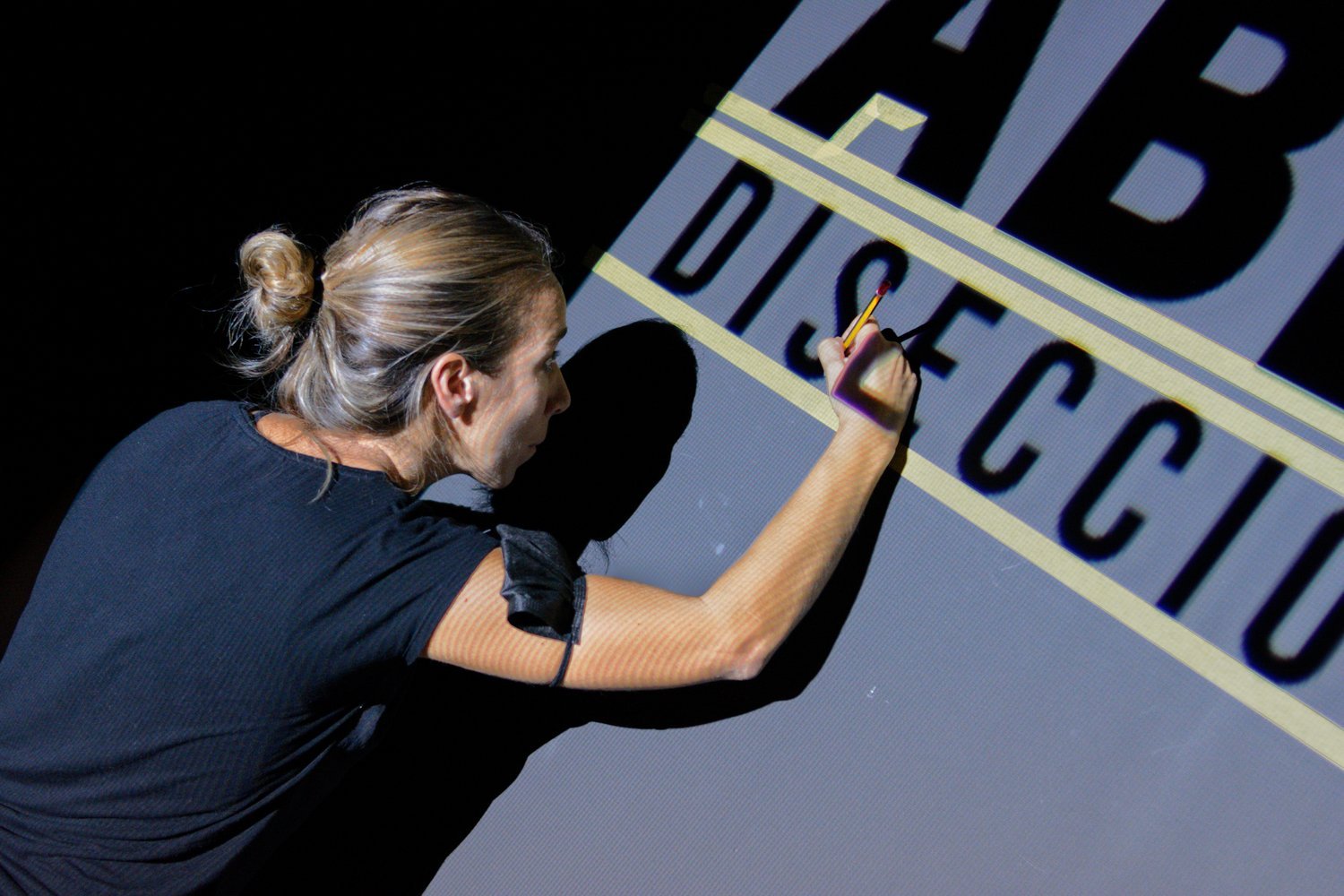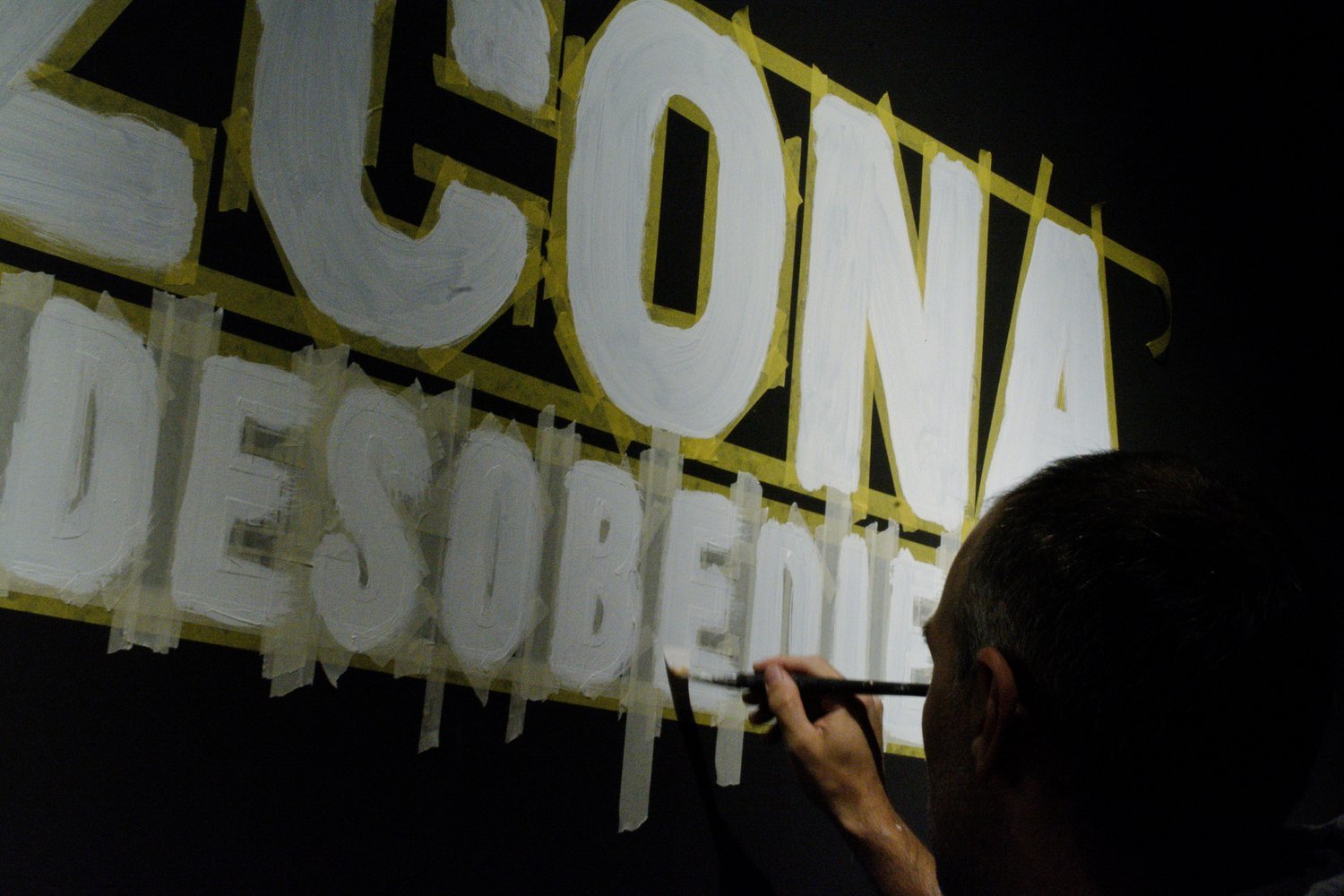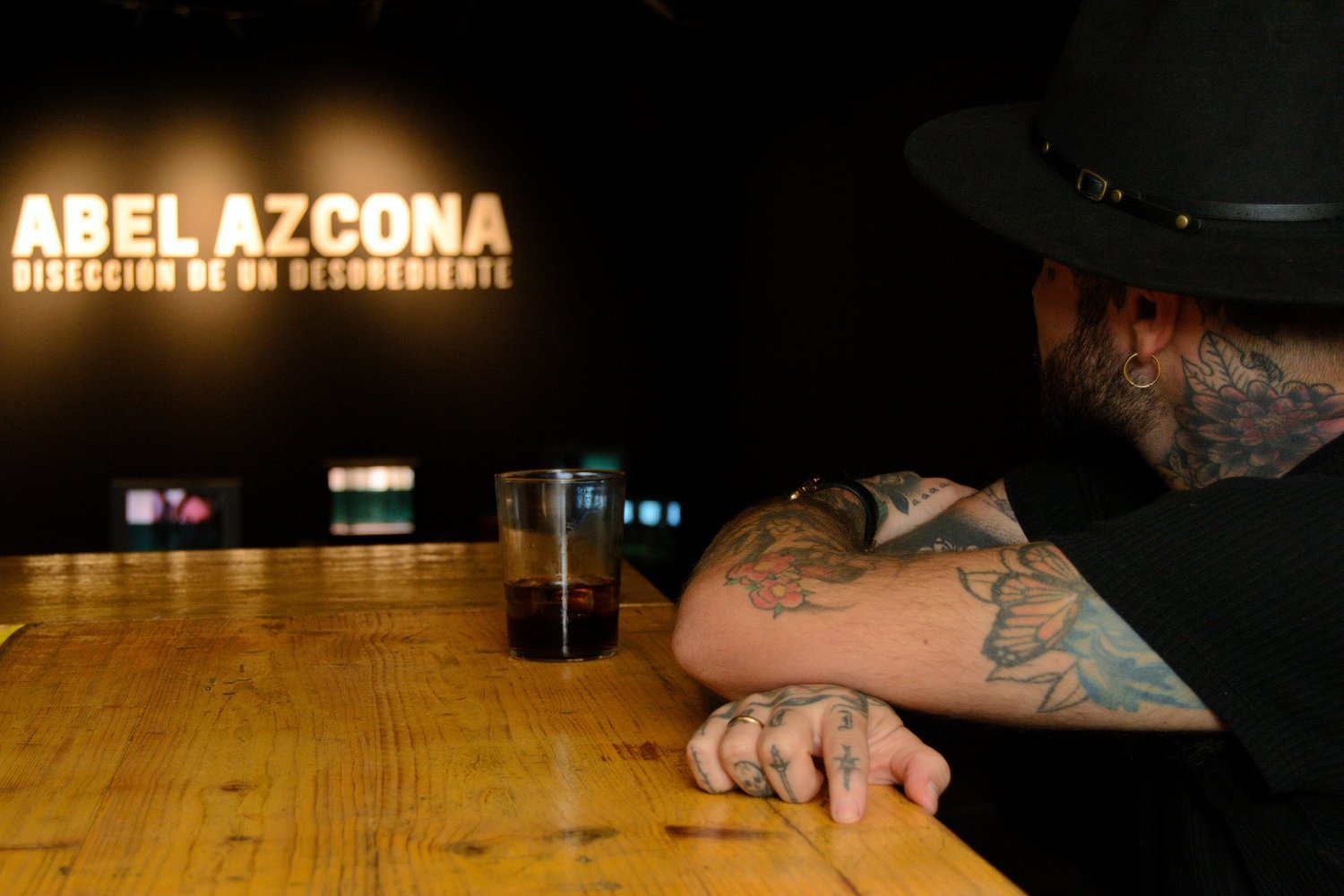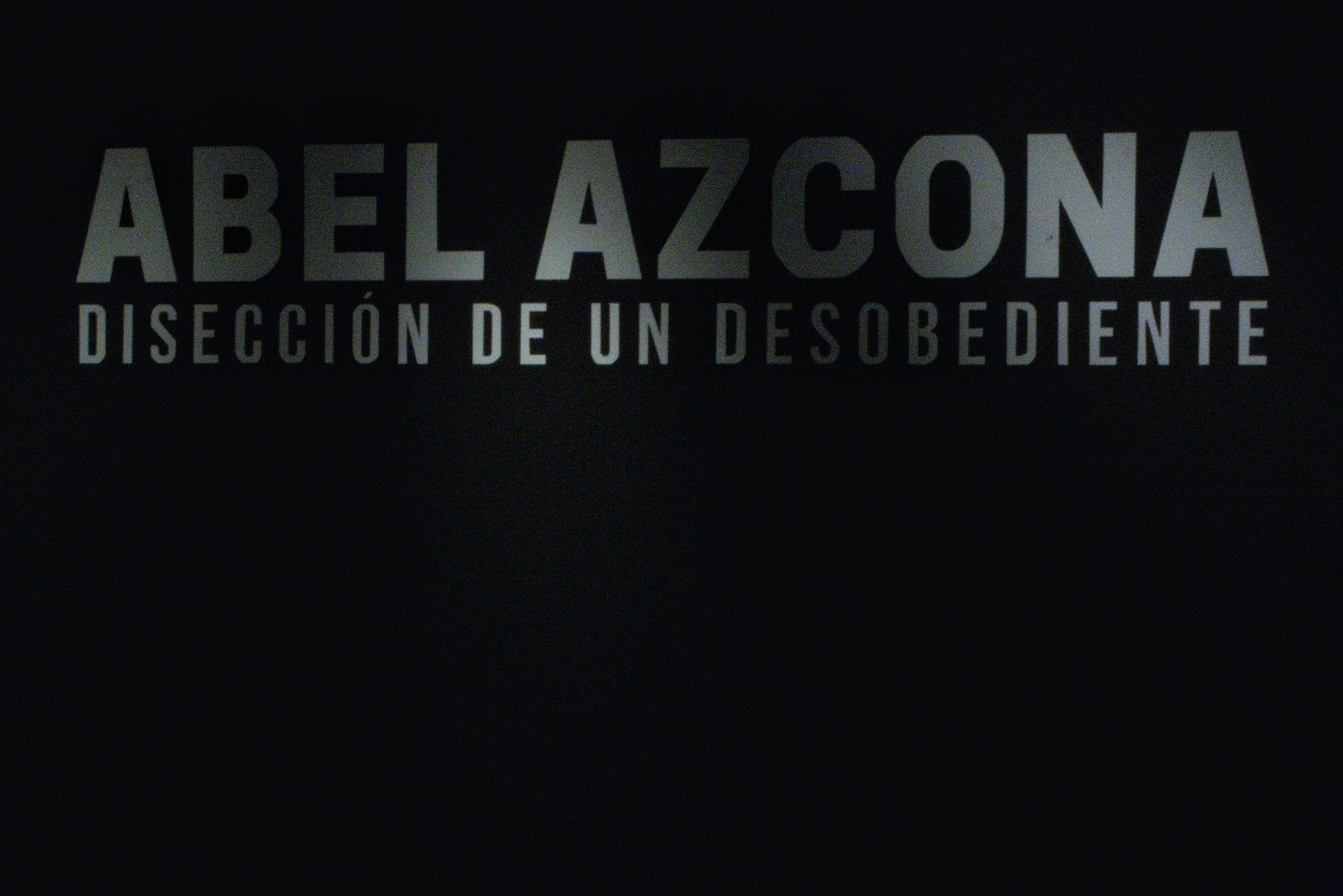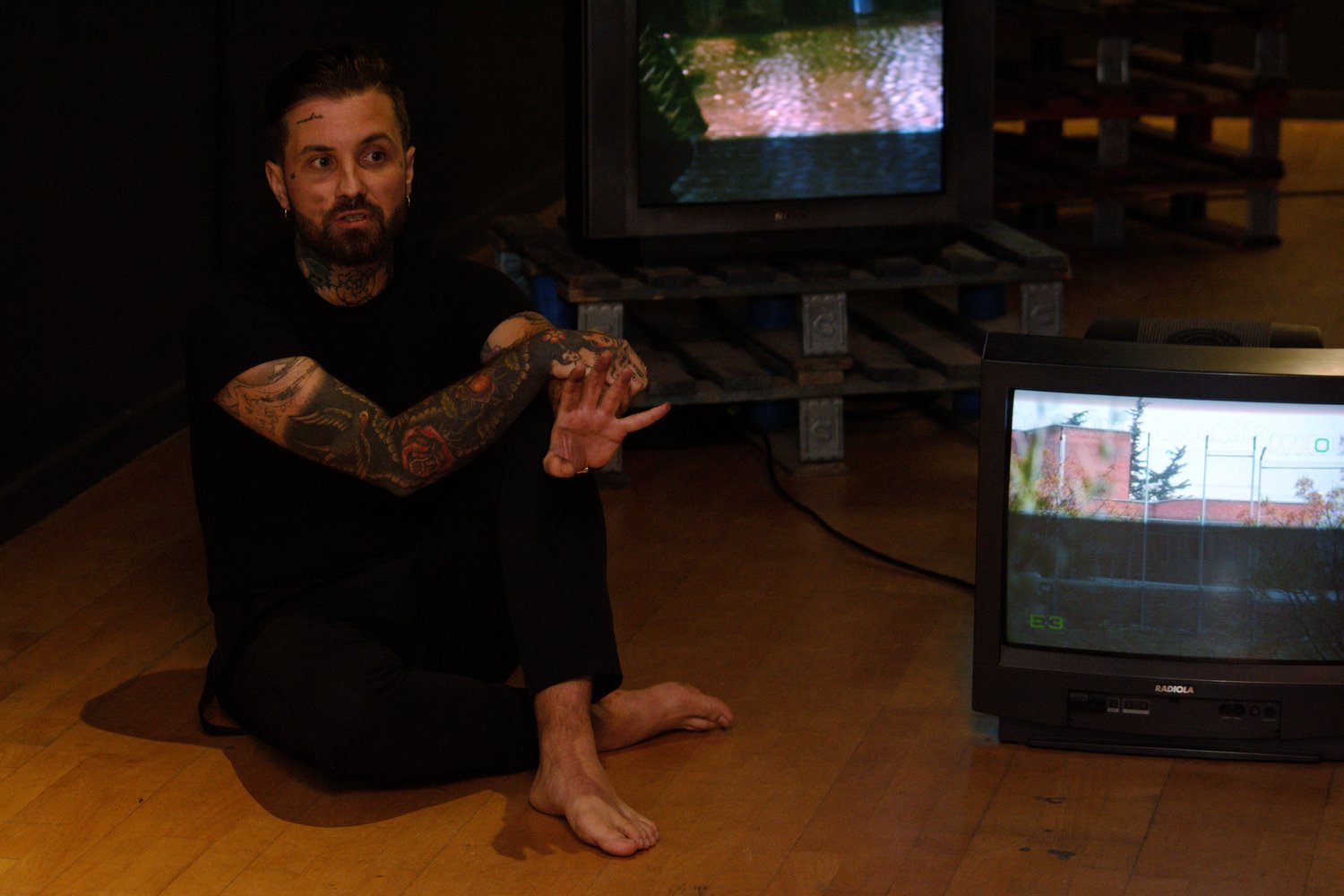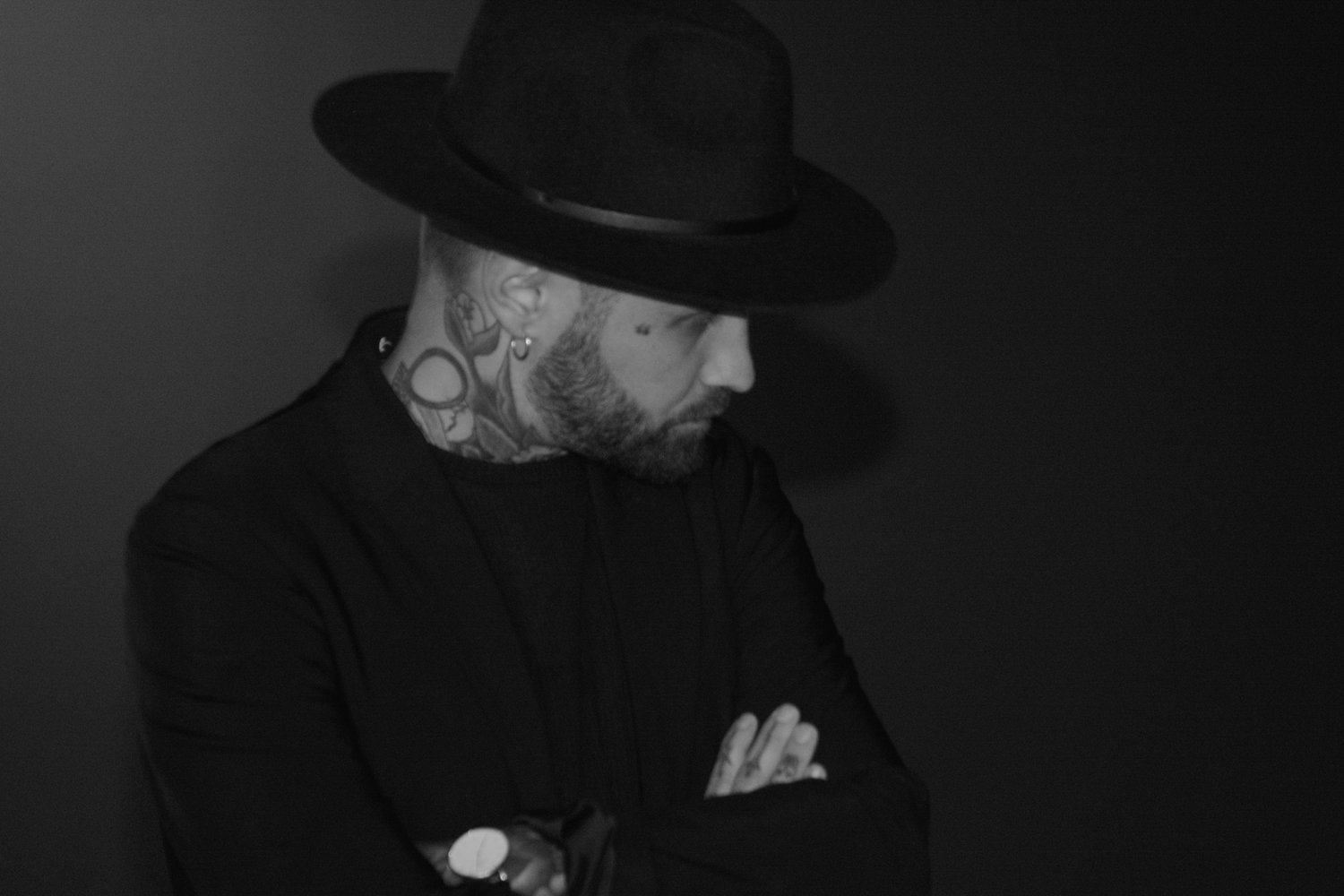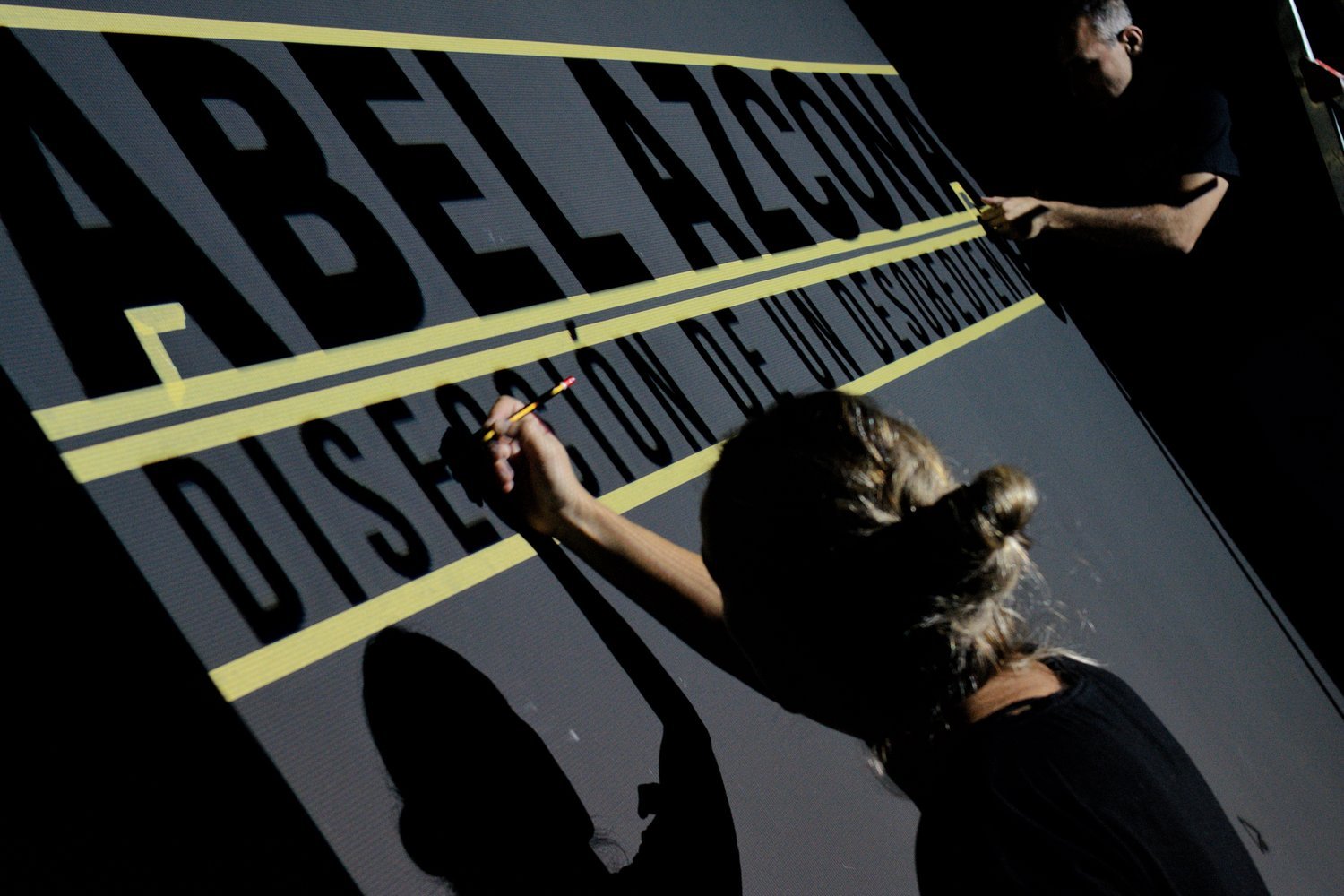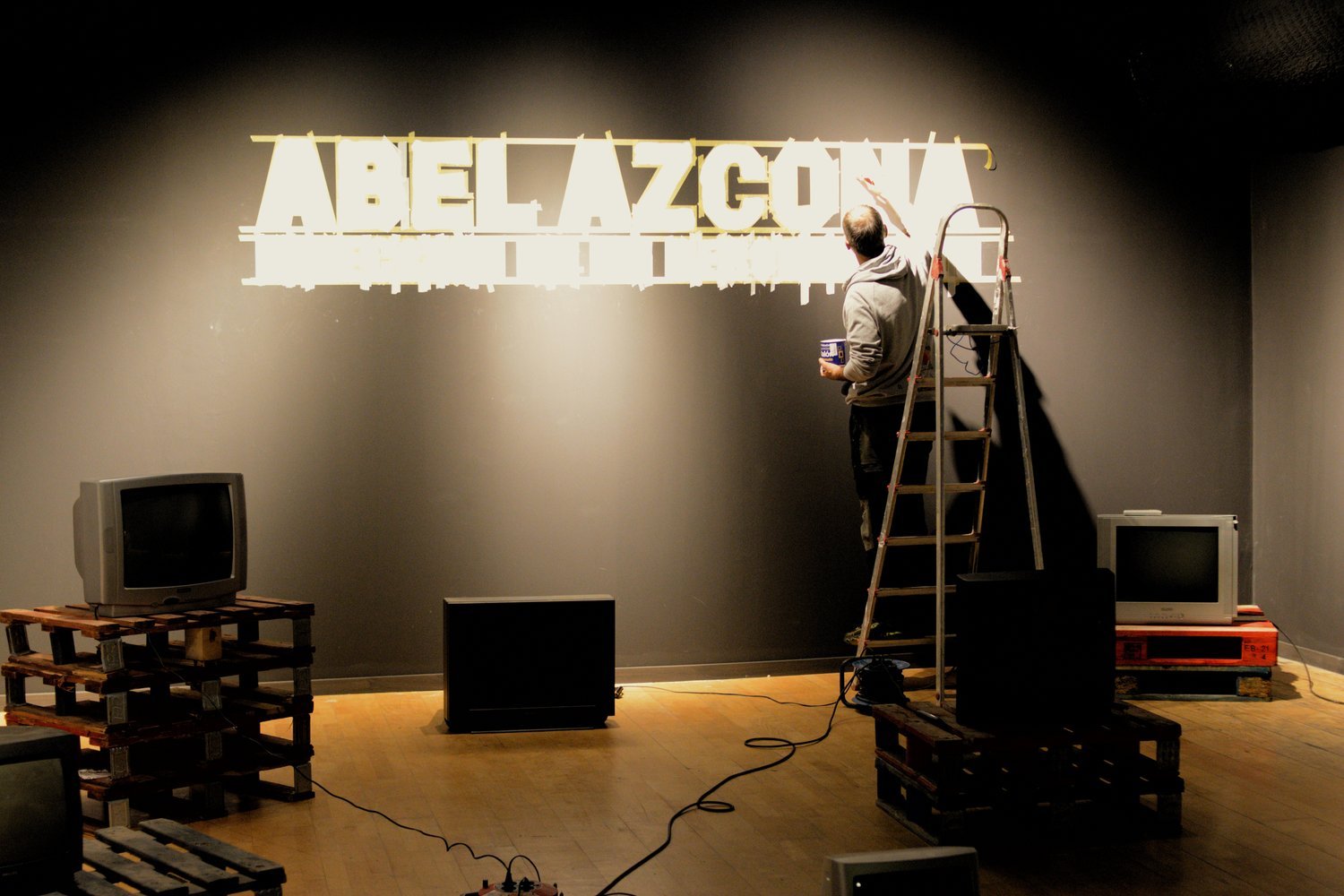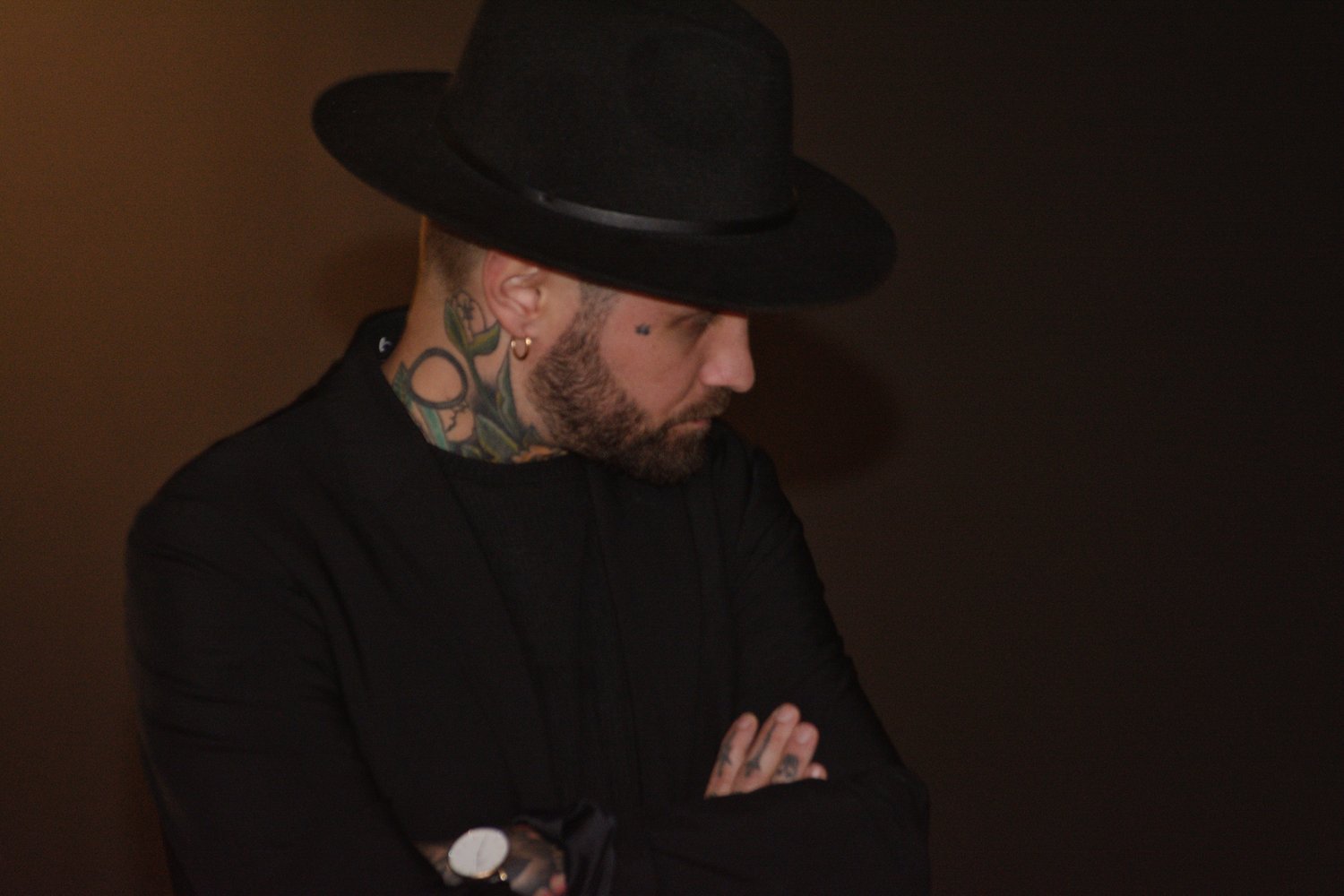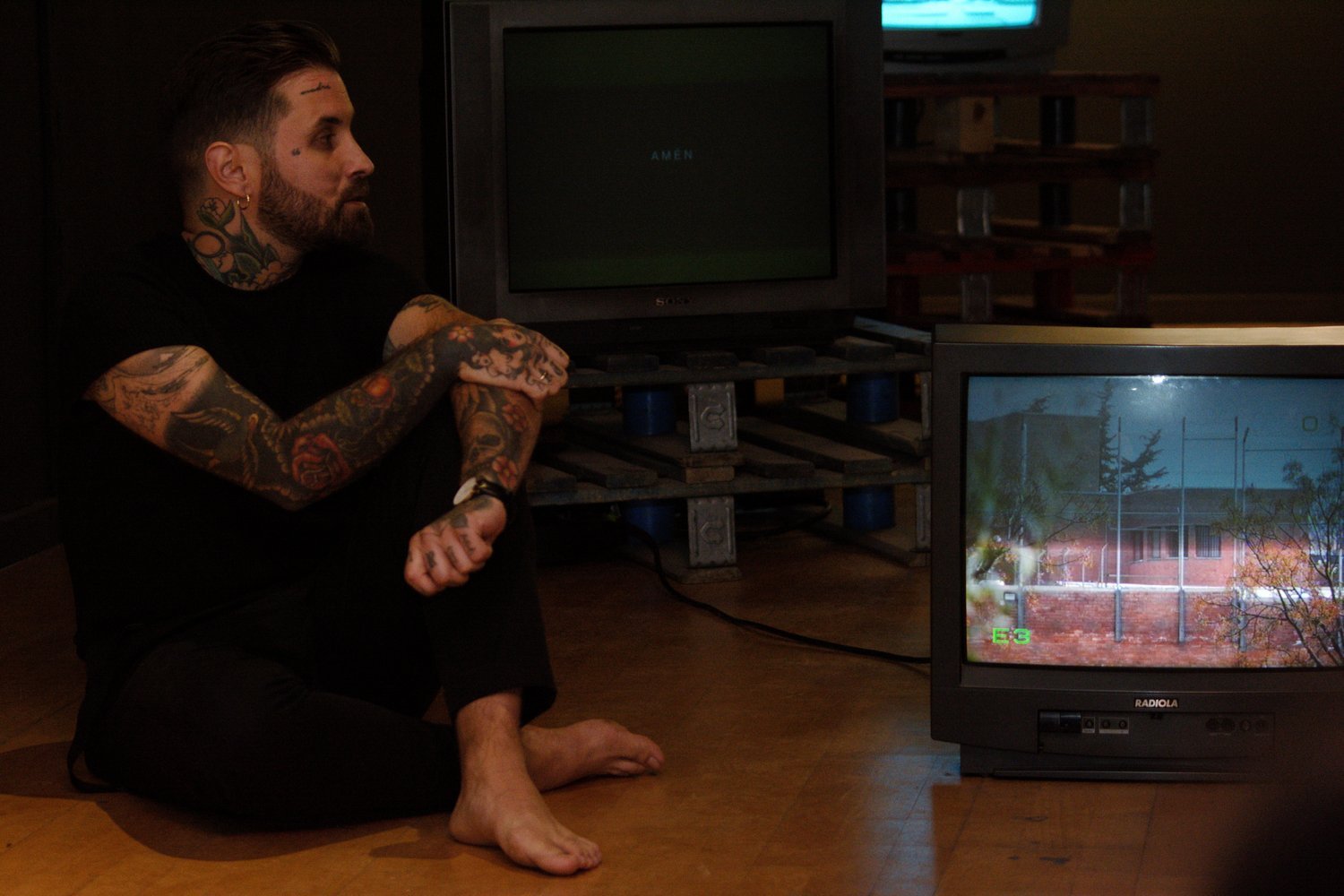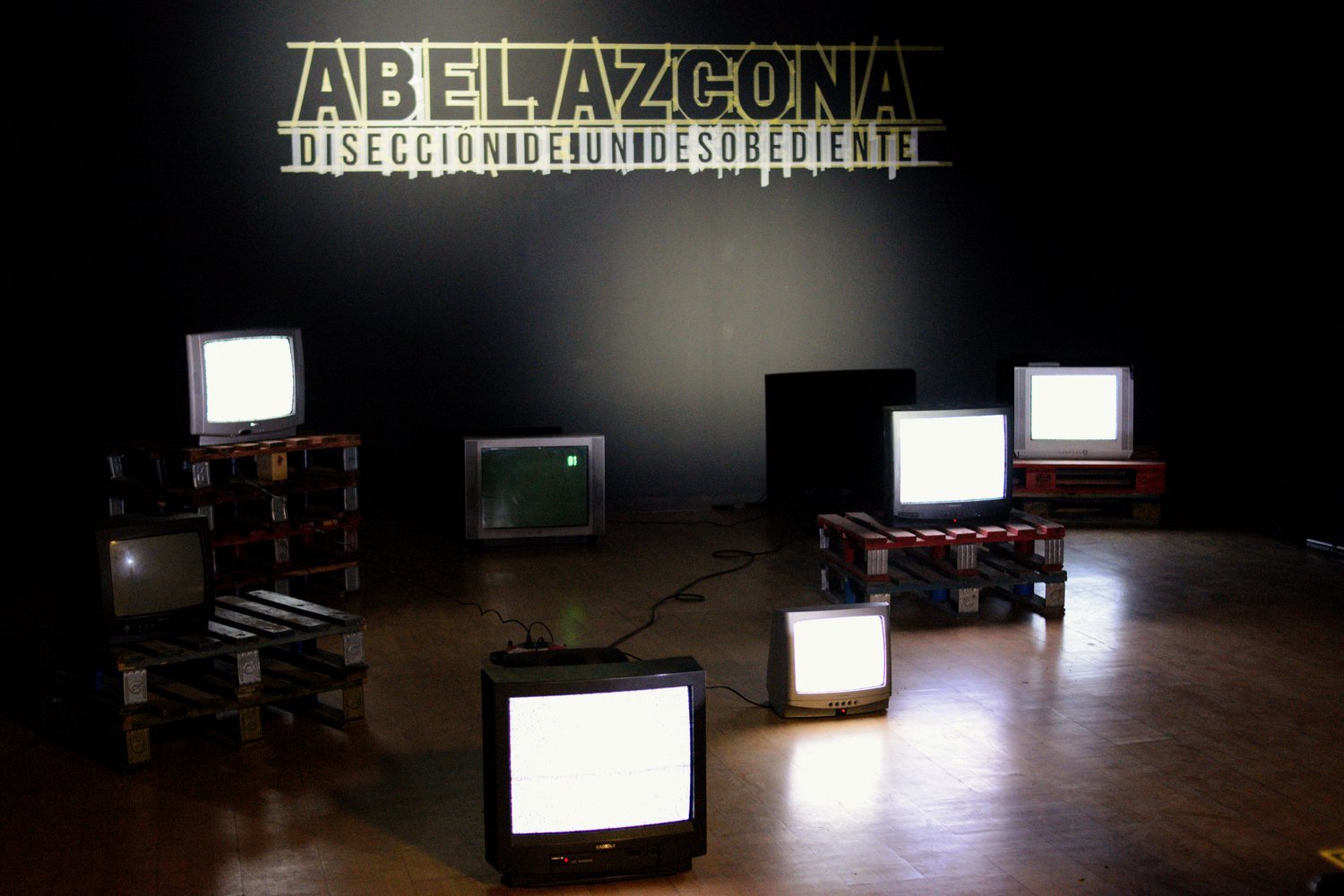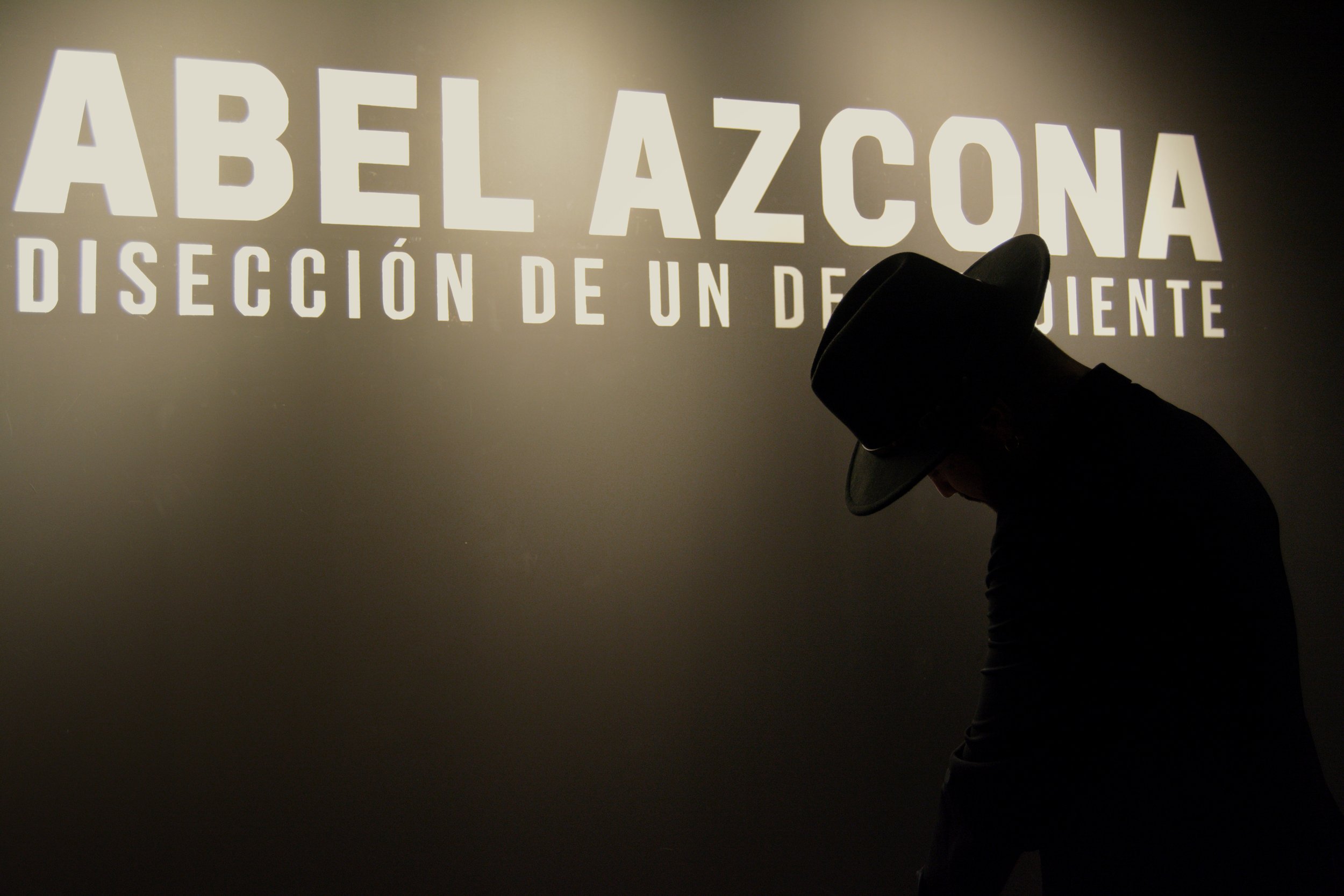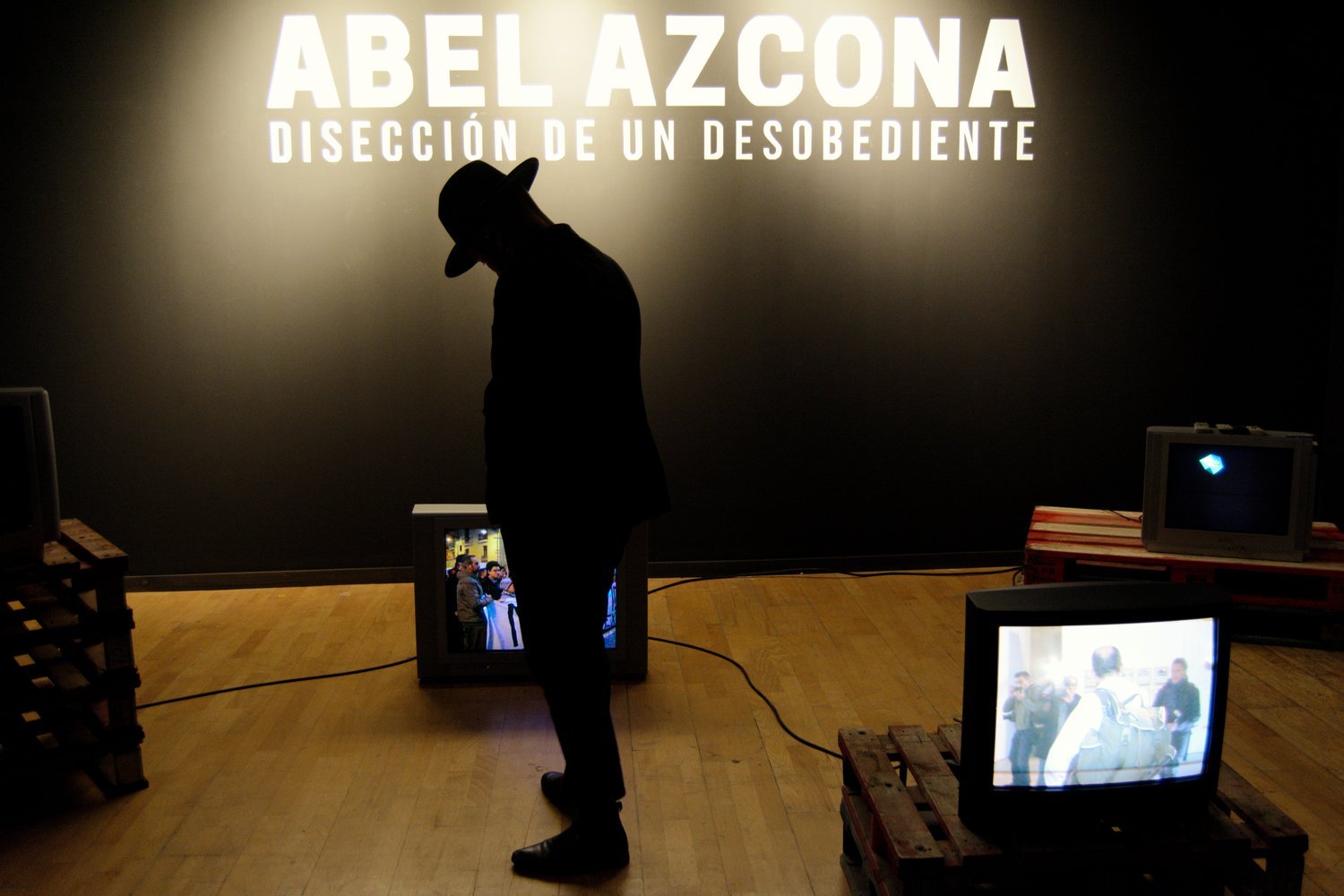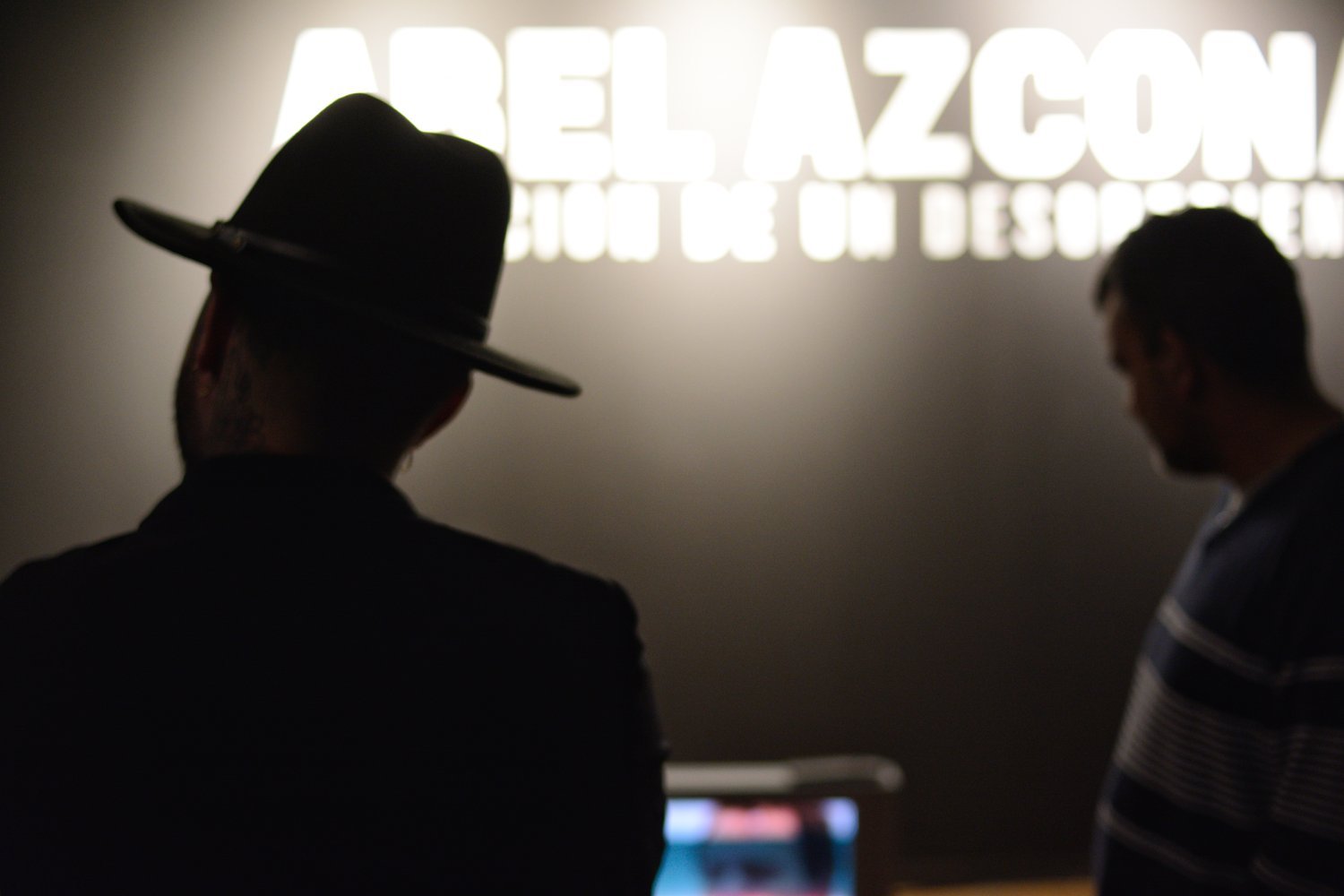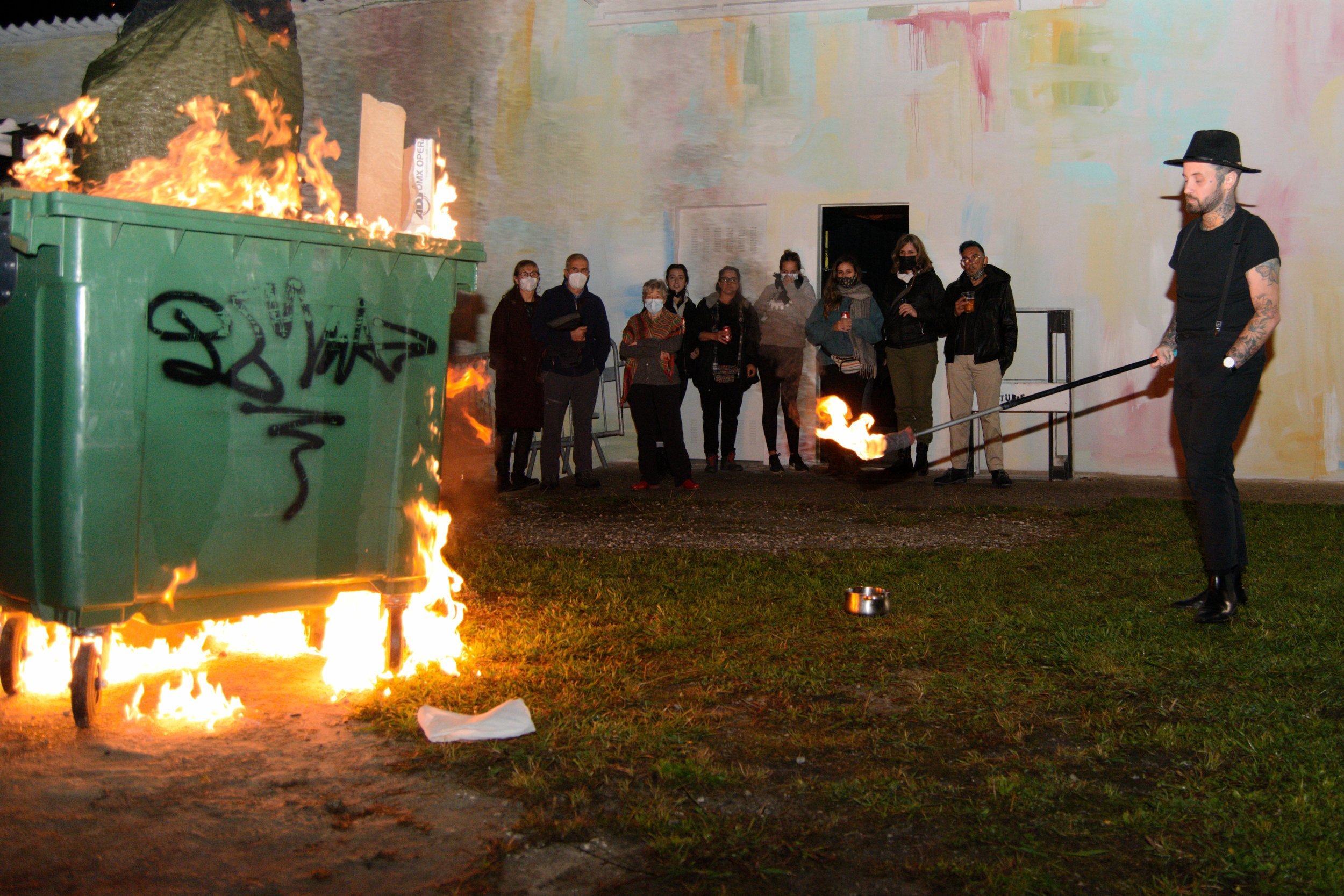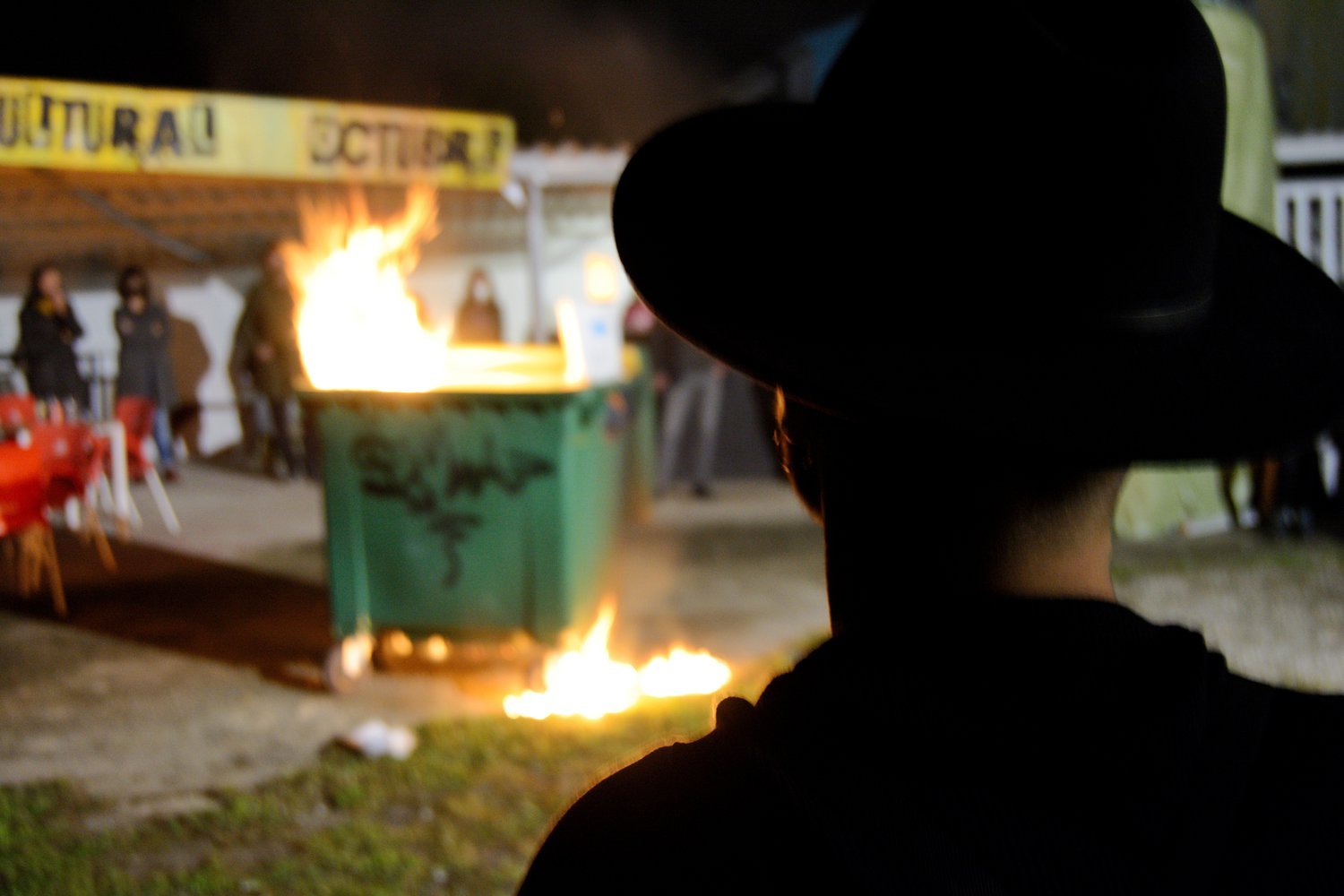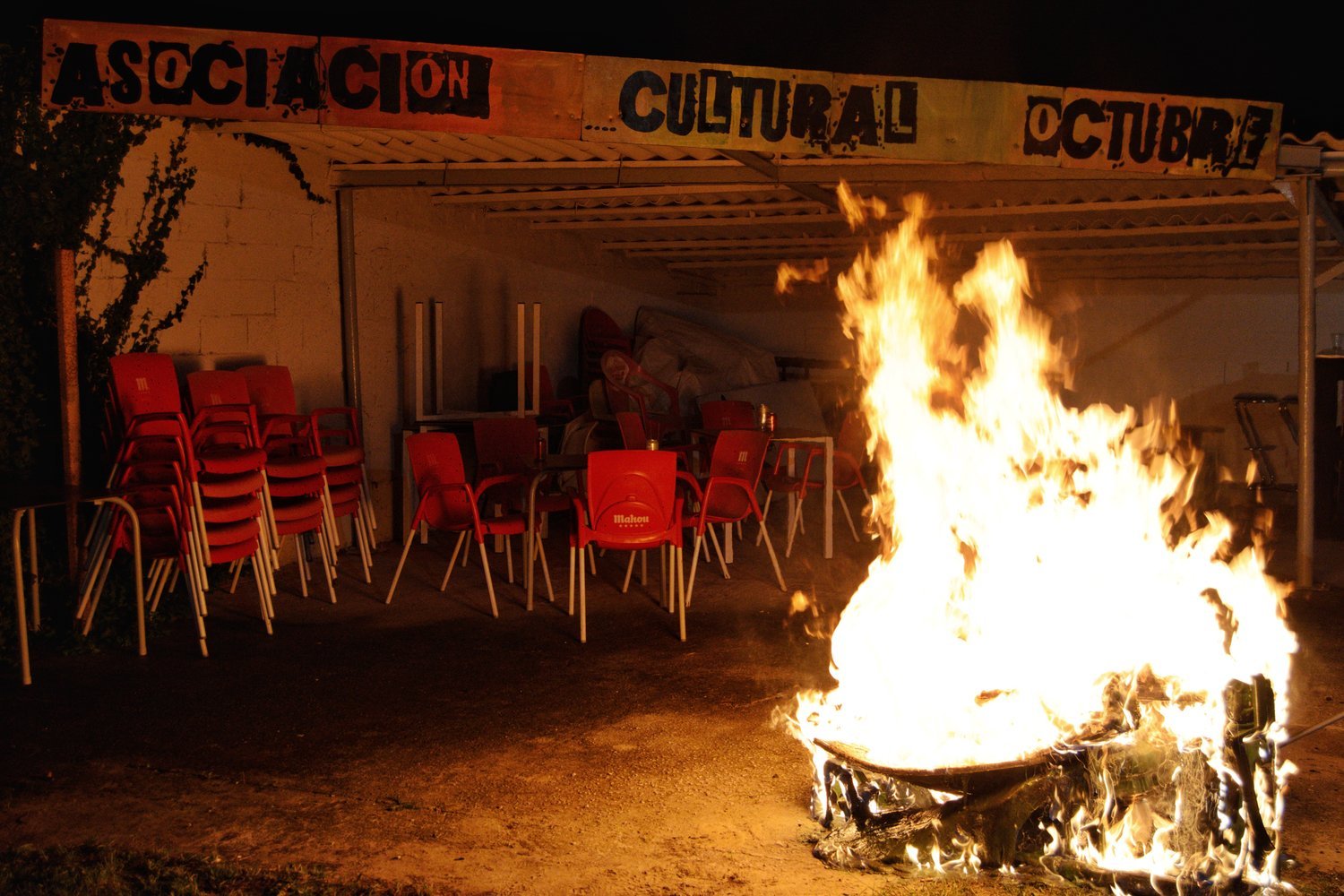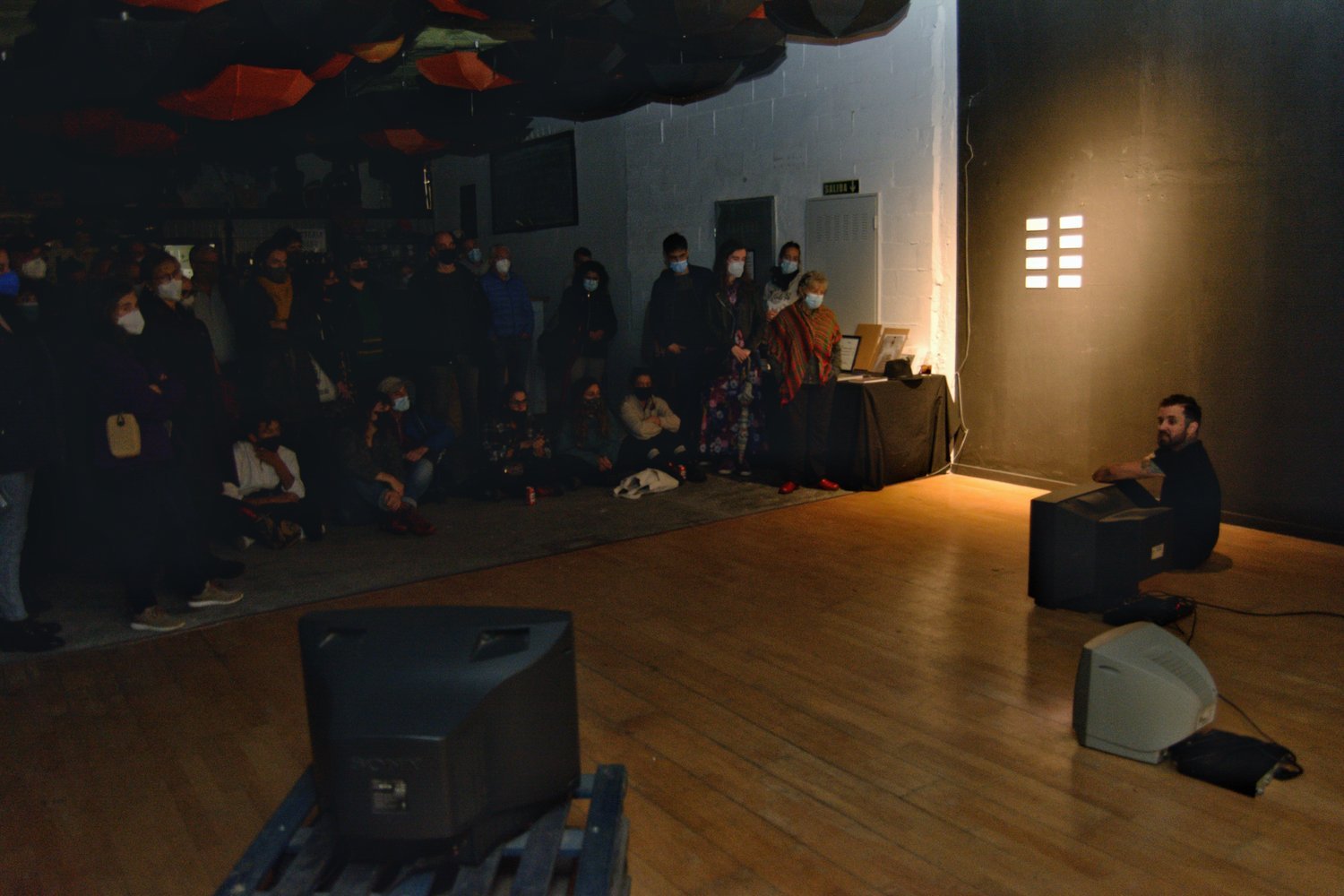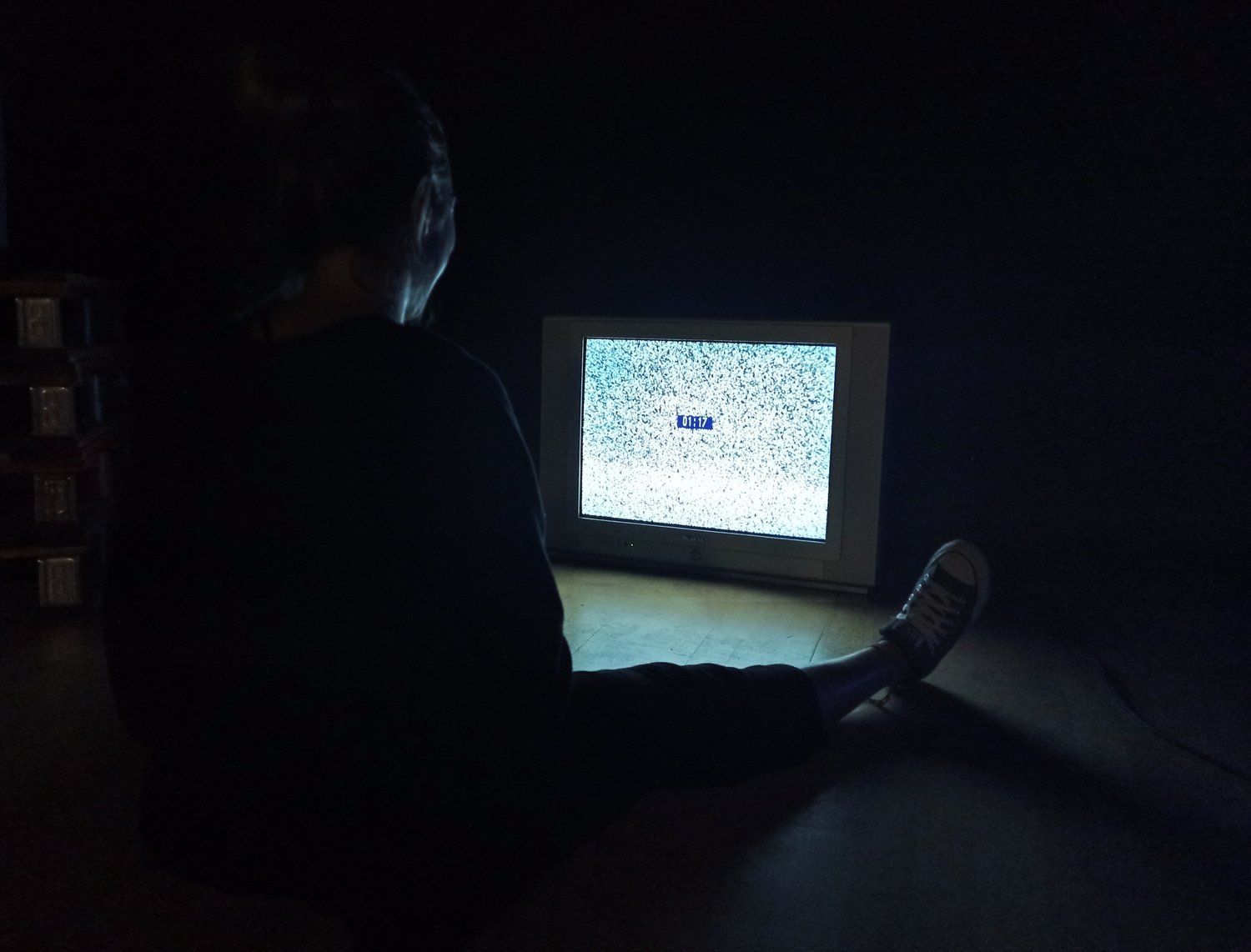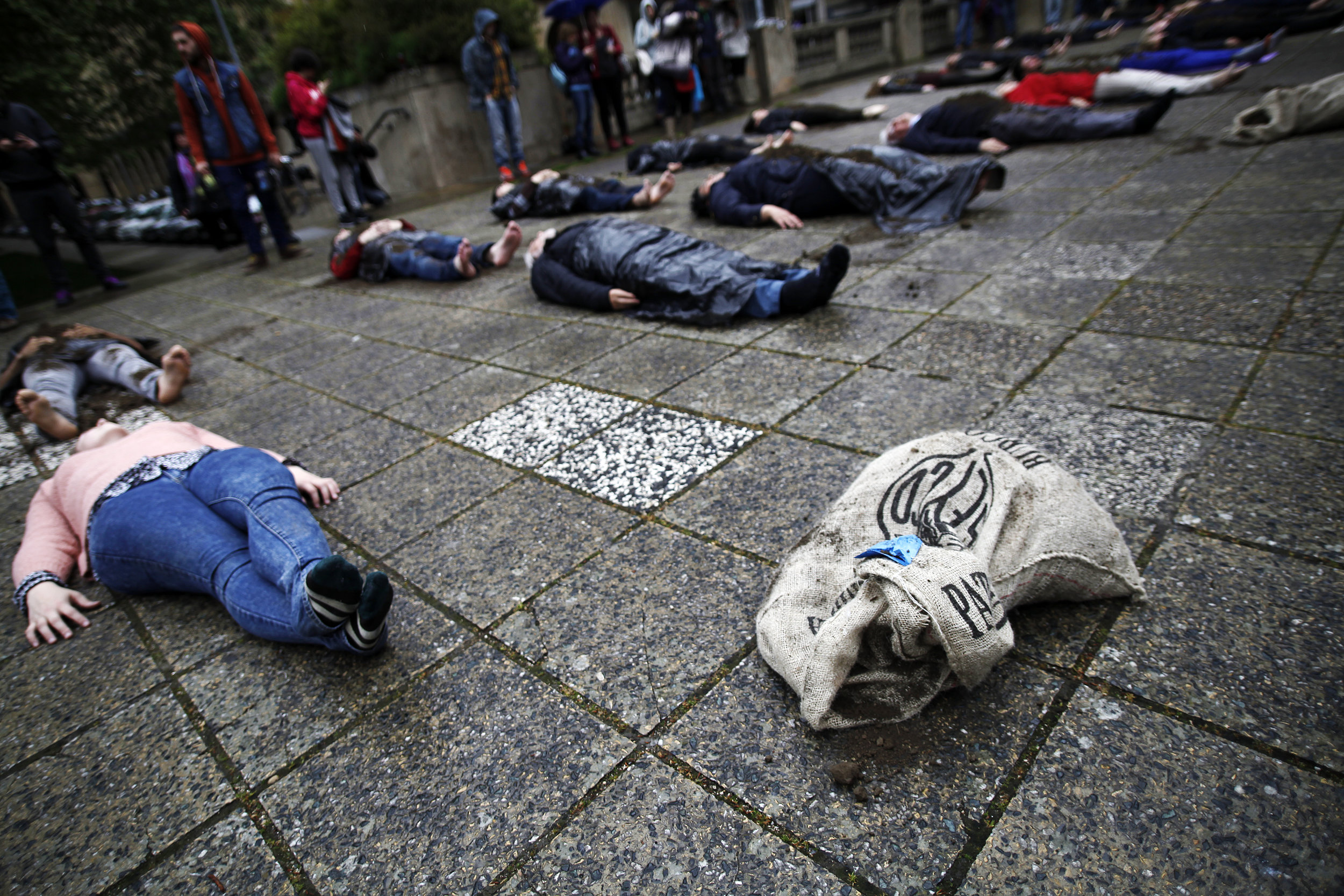Act of Disobedience is an artistic, political and visual essay developed by artist Abel Azcona since February 5, 2019.
To understand the work, action, performance or positioning - all these terms would be valid to understand "Act of Disobedience" - it is essential to contextualize where the author's need to disobey arises from. We are faced with an artist born in the field of prostitution and drug addiction. Abandoned at birth and raised in a context of poverty, abuse and mistreatment. Adopted and abandoned again in youth. Creator of dozens of works, after many of which he has been arrested, fined or seated in front of a court. An artist who does not believe in legal or moral limits when creating, denouncing or positioning himself politically through art. His work Amen or The Pederasty has led him to more than ten criminal complaints by the Catholic Church, this being the first time that the Church has positioned itself as a private accusator before a court. Complaints by far-right, religious and fundamentalist institutions and organizations. At the age of thirty, twelve of his works have been censored, denounced or tried in court. After five years of legal proceedings for works such as The Fall, where he carried out a complete expert report for the detonation of the Valley of the Fallen, sued by the Francisco Franco Foundation; for Amen or The Pederasty, where he denounced pedophilia in the Catholic Church with the same number of consecrated wafers as cases of child sexual abuse in northern Spain; for Political Disorder, where he joined the forty-two political parties and carried out activities and acts with the documentation, being sued for it; such as Life Penalty where his pavilion in Dhaka, the capital of Bangladesh was closed and censored for denouncing the classes and castes with abandoned children and in extreme poverty in the city; or with works like The Shame where he installs two complete segments of the Berlin Wall along the entire West Bank wall, denounced by and permanently banned from entering the State of Israel.
Thus, in this process artwork, exhibition and book we will understand and accompany Azcona, until the assumption of civil disobedience, not only as an act but also as a way of life.
____________________________________
Acto de Desobediencia es un ensayo artístico, político y visual desarrollado por el artista Abel Azcona desde el 5 de febrero de 2019.
Para comprender la obra, acción, performance o posicionamiento -todas estas acepciones serían validas para entender «Acto de Desobediencia»-, es imprescindibles contextualizar de dónde surge la necesidad de desobedecer del autor. Nos encontramos ante un artista nacido en el ámbito de la prostitución y la dro- gadicción. Abandonado al nacer y criado en un marco de pobreza, abuso y mal- trato. Adoptado y abandonado de nuevo en la juventud. Creador de decenas de obras, tras muchas de las cuales ha sido detenido, apresado, multado o sentado delante de un tribunal. Un artista que no cree en los límites legales o morales a la hora de crear, denunciar o posicionarse políticamente a través del arte. Su obra Amén o La Pederastia le ha llevado a más de diez querellas criminales por parte de la Iglesia Católica, siendo la primera vez que la Iglesia se posiciona como acusación particular ante un tribunal. Denuncias y querellas por parte de instituciones y organizaciones de extrema derecha, religiosas y fundamentalis- tas. A la edad de treinta años, doce de sus obras han sido censuradas, denuncia- das o juzgadas en tribunal. Después de cinco años de procesos judiciales por obras como La Caída, donde realiza un peritaje completo para la detonación del Valle de los Caídos, demandado por la Fundación Francisco Franco; por Amén o La Pederastia, donde denuncia la pedofilia en la Iglesia Católica con la misma cantidad de obleas consagradas que casos de abuso sexual infantil en el norte de España; como Political Disorder, donde se afilia a los cuarenta y dos partidos políticos y realiza actividades y actos con la documentación, siendo demandado por ello; como El Condenado a Vida donde su pabellón en Dhaka, capital de Bangladesh es clausurado y censurado por denunciar las clases y castas con niños abandonados y en pobreza extrema de la ciudad; o con obras como La Vergüenza donde instala dos segmentos completos del muro de Berlín a lo largo de todo el muro de Cisjordania, igualmente denunciado por el Estado de Israel y prohibiéndole la entrada de forma permanente.
De este modo, en esta obra procesual, exposición y libro comprenderemos y acompañaremos a Azcona, hasta la asunción de la desobediencia civil, no solo como acto sino también como forma de vida.
Today, February 5, 2019 at 10.15, according to the Berga Investigating Court, I should "appear to testify as a defendant for a crime of desecration established in article 524 of the Penal Code in competition with the crime against religious feelings.”
Today, February 5, 2019, at the same time as the court summons, I declare that I assume a position of disobedience, which is why I decide not to go to the Berga Court as an act of rebellion. Contemporary art is and should be a tool for social and political criticism and an exercise of freedom. To quote Michael Foucault: "freedom does not reside in discovering or being able to determine who we are, but in rebelling against all those ways in which we are previously defined, categorized and classified." This has been a constant in my life.
Disobedience is intimately linked to freedom, so that a person can become free through acts of disobedience, learning to say no to power or to the forms of violence that violate and make their existence precarious. Existing itself is already violent, but greater violence is not living out of fear of dissent. Perhaps it is that, also, freedom lies in that sum of small - or great - resistances that, from the first minute of life, teach us that only with the help of that force can we survive.
From this fracture with order, an unbreakable bond with life is also reestablished. If I fear freedom, then I could not dare to say "no", I would not have the courage to be disobedient. Freedom and the capacity for disobedience (understood as questioning the unquestionable) are inseparable, hence any social, political and religious system that proclaims freedom, but represses disobedience, cannot be sincere and must be questioned. Thus, a democratic system (if it really is) will not only defend the freedom of its individuals, but will not repress the disobedient. So what is our place? The “disobedient” Henry David Thoreau thought that: “Under a government that imprisons unjustly, the true place for a just man is in prison […] It is there, on that separate, but freer and more honorable soil, where the State places to those who are not with him, but against him, where the free man can dwell with honor”. Is this the end they seek? In this story, who is the enemy: the pedophile or the artist? The one who commits the abuse or the one who reports it? Who will go unpunished? Like Thoreau, I affirm: “I was not born to be forced. Do I breathe my way?
As an artist, as a creator, I decided to work with a subject that hurts me, that I know and that I have experienced in the first person, listened to and accompanied by different voices and affections. Thinking in the key of Judith Butler: "To say 'I am not going to deny my act' is to refuse to carry out a refusal, but it is not precisely to vindicate the act. To say 'yes, I did it' is to vindicate the act, but it is also to commit another act in the same claim, in the act of making the facts public, a new criminal act that duplicates and takes the place of the previous one". The offense was already done before my work. Thousands of testimonies are the cries of Antigone waiting to be heard. They also demand the presence of the law. Why is a piece, then, attended before the human? It is evident that my work can disappear, censored (although I will fight so that they do not succeed); but will we be passive witnesses of the victims who still do not know the horizon of justice? I consider a lot to be at stake when various censorship mechanisms fight so that this cannot be dealt with in art. The question to be answered will then be: where else can your voice be heard? We have seen that not within the framework of the Law.
There are almost 100,000 victims of clerical pedophilia recognized throughout the world, from the United States to Australia, from Ireland to the Netherlands, from Chile to Mexico, from Italy to Spain, according to the latest report by ECA Global, an organization for survivors of clerical abuse throughout the world. I have collaborated on various artistic projects with renowned people such as Peter Saunders, various former members of the Vatican Anti-Pederasty Commission; José Andrés Murillo, one of the victims of Karadima in Chile; Alberto Athié, one of the first complainants of the priest Marcial Maciel, a rapist of hundreds of minors, based on reports from state investigation commissions, data from judicial investigations or internal Church commissions. The Amen or The Pederasty project was born as a provocative and subversive artistic piece in order to denounce this global situation.
Since 2015, different entities, such as the Archdiocese of Pamplona and Tudela and the Christian Lawyers Association, have pursued my artistic creations, without empathizing with the complaints implicit in them. Nor has it been clear that my visibility circuit is art, where freedom of expression and creation must always prevail in contemporary productions. Since the retrospective exhibition that the Pamplona City Council dedicated to my work -and person- in the Municipal Hall of the Plaza de La Libertad in the city of Pamplona, the media and judicial persecution has been constant and permanent. This encourages a constant public attack that is accompanied by more than fifteen thousand threats on social networks, demonstrations, rallies, daily "rosary prayers" in front of my home, reparation masses in dozens of Churches in Spain and Latin America. Given this scenario, it is worth mentioning that I have not sued for feeling harassed, violated. I understand that it is part of the process of a work like “Amen”; What surprises me is that it does not cause the same indignation and persecution with those who have inspired the work, still covered up by impunity. I observe that the process has not aroused the empathy of those who denounce me with the victims, for those who have not observed the same provision of resources and investigation to attend their legal cause.
The Archdiocese of Pamplona and Tudela and the Christian Lawyers Association, through various complaints in the Court of Justice of Pamplona, began a three-year process that, just over a year ago, the Judge in charge of the case in the Court concluded categorically as a legitimate exercise of freedom of expression and denunciation of the scourge of pedophilia in the Catholic Church. It seems that the rebellion is not only mine, but the direction and intention of those who now accuse me is different: the refusal to accept the verdict.
What is the ultimate goal of your accusation? Who is your alleged redress action aimed at? I write this expressing my disobedience to an accusation, which is more the product of stubbornness or the interests of third parties than a legitimate exercise of thinking or debating the impact of my “Amen” project. Who do they obey? Something tells me it is not the autonomous use of their critical capacity. The reiteration of the charges, the repetitive insistence of their thinking and arguments make me consider that they are in the place of the one who obeys (without thinking) as pure passive obedience.
The seriousness of giving up thinking is not wanting to leave the minority of age. Kant clarifies that “ theman is guilty of it. The minority of age is based on the inability to use one's own understanding, without the direction of another. One is guilty of this minority, when the cause of it does not lie in a defect of understanding, but in the lack of decision and courage to serve independently of it, without the guidance of another. Sapere aude! Have courage to use your own understanding!" But this will be possible when you are released.
My work has its own language (art), its scene of circulation (galleries, fairs, festivals); even its own judges (art critics, gallery owners, curators). It could be debated in congresses, studies or work rehearsals. Trying to explain it in a discourse other than the nature of its creation and exhibition seems to me a nonsense, even more so after years of trials and a verdict in my favor. Still, here I am giving an account of it.
I could just keep quiet and start another long court process, I know. And they may wonder why I was being undisciplined. I do it to intensify the need for artistic practice not to cease to be a scenario of possibility for the unspeakable, that which has been expelled, erased, silenced. Art as that space of emancipation that generates power in critical, rebellious and creative thinking.
Just make sure that the persecution always comes from common groups. In recent years, I have had open cases in legal proceedings with the Archdiocese of Pamplona and Tudela, VOX, Christian Lawyers Association, Hazte Oír or the Francisco Franco Foundation. It is evident that the regime of 78 is watering down. It is visible in every case of political corruption. Meanwhile, creators and thinkers are persecuted for their ideas, many of us sentenced to prison or exile as the only alternative. A continuous mistreatment of freedom of expression and a total loss of democratic guarantees. As Gramsci said, "the old world dies, the new takes time to appear and in that chiaroscuro, monsters are born."
Atenta y desobedientemente,
Abel Azcona
Hoy, 5 de febrero de 2019 a las 10.15 según el Juzgado de Instrucción de Berga debería “comparecer para declarar como imputado por un delito de profanación establecido en el artículo 524 del Código Penal en concurso con el delito contra los sentimientos religiosos.”
Hoy, 5 de febrero de 2019, a la misma hora de la citación judicial, yo declaro que asumo una posición de desobediencia, por lo que decido no acudir al Juzgado de Berga como acto de rebeldía. El arte contemporáneo es y debe ser una herramienta de crítica social y política y un ejercicio de libertad. Citando a Michael Foucault: “la libertad no reside en descubrir o en ser capaces de determinar quienes somos, pero sí en rebelarnos contra todas esas maneras en que somos previamente definidos, categorizados y clasificados”. Esto ha sido una constante en mi vida.
La desobediencia está íntimamente ligada a la libertad, de modo que una persona puede llegar a ser libre mediante actos de desobediencia, aprendiendo a decir no al poder o a las formas de violencia que vulneran y precarizan su existencia. Existir en sí mismo ya es violento, pero mayor violencia es no vivir por miedo al disenso. Acaso es que, también, la libertad radique, en esa suma de pequeñas – o grandes- resistencias que, desde el primer minuto de vida, nos enseñan que solamente con ayuda de esa fuerza podremos sobrevivir. De esta fractura con el orden, se restablece también un lazo inquebrantable con la vida. Ahora bien, si temo a la libertad, entonces, no podría atreverme a decir “no”, no tendría el coraje de ser desobediente. La libertad y la capacidad de desobediencia (entendida como cuestionar lo incuestionable) son inseparables, de ahí que cualquier sistema social, político y religioso que proclame la libertad, pero reprima la desobediencia, no puede ser sincero y debe ser cuestionado. Así pues, un sistema democrático (si realmente lo es), no solo defenderá la libertad de sus individuos, sino que no reprimirá a los desobedientes. ¿Entonces cuál es nuestro lugar? El “desobediente” Henry David Thoreau pensaba que: “Bajo un gobierno que encarcela injustamente, el verdadero lugar para un hombre justo está en la cárcel […] Es allí, en ese suelo separado, pero más libre y honorable, donde el Estado coloca a los que no están con él, sino en su contra, donde el hombre libre puede habitar con honor”. ¿Será acaso este el fin que buscan? En este relato, ¿quién es el enemigo: el pederasta o el artista? ¿el que comete el abuso o quién lo denuncia? ¿quién quedará impune? Al igual que Thoreau, afirmo: “Yo no nací para ser forzado. ¿Respiro a mi manera?”
Como artista, como creador, decidí trabajar con un tema que me duele, que conozco y que he vivido en primera persona, escuchado y acompañado desde distintas voces y afectos. Pensando en clave de Judith Butler: "Decir 'yo no voy a negar mi acto' es rechazar llevar a cabo una negativa, pero no es precisamente reivindicar el acto. Decir 'sí, lo hice' es reivindicar el acto, pero también es cometer otro acto en la misma reivindicación; en el acto de hacer públicos los propios hechos, un nuevo acto criminal que redobla y toma el lugar del anterior". La ofensa ya estaba hecha antes de mi obra. Miles de testimonios son los gritos de Antígona que esperan ser escuchados. También reclaman la presencia de la ley. ¿Por qué entonces una pieza esa atendida antes que lo humano? Es evidente que mi obra puede desparecer, censurada (aunque lucharé para que no lo logren); pero acaso ¿seremos testigos pasivos de las víctimas que siguen sin conocer el horizonte de la justicia? Considero que mucho está en juego cuando diversos mecanismos censores luchan para que en el arte esto no se pueda tratar. La pregunta a responder será ¿entonces dónde más podrá ser escuchada su voz? Hemos visto que en el marco de la Ley no ha sido así.
Existen casi 100.000 víctimas de la pederastia clerical reconocidas en todo el mundo, desde Estados Unidos a Australia, desde Irlanda a Holanda, de Chile a México, de Italia a España, según el último informe de ECA Global, organización de supervivientes del abuso clerical de todo el mundo. He colaborado en varios proyectos artísticos con personas reconocidas como Peter Saunders, diversos ex miembros de la Comisión Antipederastia del Vaticano; José Andrés Murillo, una de las víctimas de Karadima en Chile; Alberto Athié, uno de los primeros denunciantes del sacerdote Marcial Maciel, violador de cientos de menores, basándose en informes de comisiones estatales de investigación, datos de investigaciones judiciales o comisiones internas de la Iglesia. El proyecto Amén o La Pederastia nace como pieza artística provocadora y subversiva con el fin de denunciar esta situación global.
Desde el año 2015, diferentes entidades como el Arzobispado de Pamplona y Tudela y la Asociación de Abogados Cristianos, han perseguido mis creaciones artísticas, sin empatizar con las denuncias implícitas en la mismas. Tampoco ha quedado claro que mi circuito de visibilidad es el arte, en donde la libertad de expresión y creación siempre debe prevalecer en las producciones contemporáneas. Desde la exposición retrospectiva que el Ayuntamiento de Pamplona dedicó a mi obra -y persona- en la Sala Municipal de la Plaza de La Libertad de la ciudad de Pamplona, la persecución mediática y judicial ha sido constante y permanente. Animando con ello a un constante ataque público que va acompañado de más de quince mil amenazas en redes sociales, manifestaciones, concentraciones, “rezos de rosarios” diarios frente a mi domicilio, misas de reparación en decenas de Iglesias de España y Latinoamérica. Ante este escenario, cabe mencionar, que no he demandado por sentirme acosado, vulnerado, violentado. Entiendo que es parte del proceso de una obra como “Amén”; lo que me sorprende es que no cause la misma indignación y persecución con los que han inspirado la obra, aún encubiertos por la impunidad. En un segundo orden de ideas, observo que tampoco el proceso ha despertado la empatía de los que me denuncian con las víctimas, para quienes no han observado la misma disposición de recursos e investigación para atender su causa legal.
El Arzobispado de Pamplona y Tudela y la Asociación de Abogados Cristianos, mediante varias denuncias en el Tribunal de Justicia de Pamplona, empezaron un proceso de tres años de duración que, hace poco más de un año, el Juez encargado del caso en el Tribunal concluyó de forma categórica como un ejercicio legitimo de Libertad de expresión y denuncia de la lacra de la pederastia en la Iglesia Católica. Tal parece que la rebeldía no es solamente mía, pero la dirección e intención de los que ahora me acusan sí que es distinta: la negación de aceptar el veredicto.
¿Cuál es el fin último de su acusación? ¿A quién va dirigida su supuesta acción de desagravio? Escribo esto manifestando mi desobediencia a una acusación, que resulta más producto de la terquedad o de intereses de terceros que un ejercicio legítimo de pensar o debatir el impacto de mi proyecto “Amén”. ¿A quién obedecen? Algo me dice que no al uso autónomo de su capacidad crítica. La reiteración de los cargos, la insistencia repetitiva de su pensar y argumentos me hacen considerar que están ubicados en el lugar del que obedece (sin pensar) como pura obediencia pasiva.
La gravedad de renunciar al pensar es no querer salir de la minoría de edad. Kant aclara que “el hombre es culpable de ella. La minoría de edad estriba en la incapacidad de servirse del propio entendimiento, sin la dirección de otro. Uno mismo es culpable de esta minoría de edad, cuando la causa de ella no yace en un defecto del entendimiento, sino en la falta de decisión y ánimo para servirse con independencia de él, sin la conducción de otro. ¡Sapere aude! ¡Ten valor de servirte de tu propio entendimiento!” Pero esto será posible cuando se le deje en LIBERTAD.
Mi obra tiene su propio lenguaje (arte), su escenario de circulación (galerías, ferias, festivales); incluso sus propios jueces (críticos de arte, galeristas, curadores). Podría se debatida en congresos, estudios o ensayos de obra. Intentar explicarla en un discurso distinto al de la naturaleza de su creación y exhibición me parece un despropósito, más aún después de años de juicios y un veredicto a mi favor. Aún así, aquí estoy dando cuenta de ella.
Podría quedarme callado e iniciar otro largo proceso de tribunales, lo sé. Y posiblemente se preguntarán el motivo para indisciplinarme. Lo hago para intensificar la necesidad de que la práctica artística no deje de ser escenario de posibilidad para aquello indecible, lo que ha sido expulsado, borrado, silenciado. El arte como ese espacio de emancipación que genere potencia en el pensar crítico, rebelde y creativo.
Únicamente hacer constancia de que la persecución siempre nace de colectivos comunes. Estos últimos años, tengo causas abiertas en procesos judiciales con el Arzobispado de Pamplona y Tudela, VOX, Asociación Abogados Cristianos, Hazte Oír o la Fundación Francisco Franco. Es evidente que el régimen del 78 hace aguas. Es visible en cada caso de corrupción política. Mientras tanto, se persigue a creadores y pensadores por sus ideas, muchos de nosotros condenados a prisión o al exilio como única alternativa. Un maltrato continuo a la libertad de expresión y una perdida total de las garantías democráticas. Como decía Gramsci, “el viejo mundo se muere, el nuevo tarda en aparecer y en ese claroscuro, nacen los monstruos.”
Atenta y desobedientemente,
Abel Azcona
Since February 5, 2019, public events, performances, writings and positioning actions have been activated through the original letter addressed to the court written by Azcona. In museums such as La Panera inLleida, the Teatro del Barrio in Madrid or the Centro de Arte Contemporáneo de Barcelona Fabra i Coats.
___________________
Desde el 5 de febrero de 2019 se han activado mediante la carta original dirigida al tribunal escrita por Azcona hasta actos públicos, performances, escritos y acciones de posicionamiento. En museos como La Panera de Lleida, el Teatro del Barrio de Madrid o el Centro de Arte Contemporáneo de Barcelona Fabra i Coats.
Complete filming of Azcona activating Act of Disobedience at the La Panera Art Center in the city of Lleida on October 22, 2020. / Filmación completa de Azcona activando Acto de Desobediencia en el Centro de Arte La Panera de la ciudad de Lleida el 22 de octubre de 2020.
Full filming and streaming of Azcona activating Act of Disobedience at the Teatro del Barrio in Madrid on November 12, 2020. / Filmación completa y en streaming de Azcona activando Acto de Desobediencia en el Teatro del Barrio de Madrid el 12 de noviembre de 2020.
Full streaming filming of Azcona activating Act of Disobedience at the Barcelona Center for Contemporary Art Fabra i Coats on December 12, 2020. / Filmación completa y en streaming de Azcona activando Acto de Desobediencia en el Centro de Arte Contemporáneo de Barcelona Fabra i Coats el 12 de diciembre de 2020.
Undoubtedly Act of Disobedience was the most attended and applauded session by a dislocated audience, who listened to the heartbreaking autobiography and aesthetic arguments of the artist Abel Azcona, accompanied by the actor and producer, Willy Toledo, who has been living in Badalona for months. Azcona proposes an approach to civil and artistic insubordination from memory. His controversial and daring speech is included in his book Act of disobedience (Editorial Milenio, 2020).
Full report in PliegoSuelto.
Sin duda Acto de desobediencia fue la sesión más concurrida y aplaudida por un auditorio descolocado, que escuchaba la desgarradora autobiografía y los argumentos estéticos del artista Abel Azcona, acompañado del actor y productor, Willy Toledo, quien desde hace meses reside en Badalona. Azcona plantea un acercamiento a la insumisión civil y artística desde la memoria. Su polémico y atrevido discurso está recogido en su libro Acto de desobediencia (Editorial Milenio, 2020).
Reportaje completo en PliegoSuelto.
Guillermo Toledo
Lara Alcázar
Guillermo Toledo nació el año 1970 en Madrid. Es un actor, productor de teatro y activista español. Ha sido perseguido y censurado en numerosas ocasiones por expresar con libertad sus ideales políticos. Procesado y demandado por Abogados Cristianos y entidades de ultraderecha por declaraciones en contra de la idea de Dios o la Virgen tanto en redes como en numerosas entrevistas. Absuelto, aún y todo perseguido de forma continua cada vez que sus declaraciones públicas no se adecuan a las ideas de la ultraderecha, considerándolas blasfemias.
Lara Alcázar nació el año 1992 en El Entrego, Asturias. Es una fotografía y activista feminista, líder y fundadora del grupo Femen en España desde mayo de 2013. Ha sido perseguida en numerosas ocasiones por participar junto a sus compañeras en acciones de calle y activismo político. También condenada por demandas de Abogados Cristianos y entidades de ultraderecha al realizar una acción-protesta en defensas del aborto en el interior de la Catedral de la Almudena.
Cristina Fallarás nació el año 1968 en Zaragoza. Es escritora y periodista (UAB). Ha colaborado en medios de radio, prensa y televisión. Activista y defensora de la libertad de expresión. Como escritora, se ha convertido en la primera mujer en ganar el Premio Hammett 2012 por Las niñas perdidas (2011), novela que también se alzó con el Premio de Novela Negra L’H Confidencial. Ha recibido también el Premio Ciudad de Barbastro de Novela Breve 2011 por Últimos días en el Puesto del Este. Debutó en 2002 con La otra enciclopedia catalana, a la que siguieron Rupturas (2003), No acaba la noche (2006) y Así murió el poeta Guadalupe (2009), finalista al Hammett 2010. En 2021 publica Evangelio según Magdalena.
Abel Azcona and his artistic work have been persecuted in various ways, involved in controversy and different judicial processes. The first actions generated in the streets of his adoptive city - Pamplona - in 2005 were already persecuted and the artist was arrested on different occasions.
The works about deprivation of liberty, during the first years when he began creating, generated great controversy and were interrupted, as well as the works with explicit sexuality such as Empathy and Prostitution or Las Horas, inaugurated in the city of Rome, which bothered public opinion and were criticized when it was inaugurated in cities such as Houston or Mexico City, cities where, at the time of its execution, there were antisodomy or persecution laws for sexual diversity.
___________________________
Abel Azcona y su obra artística han sido perseguidas de diversas formas, envueltas en polémica y diferentes procesos judiciales. Las primeras acciones generadas en las calles de su ciudad adoptiva – Pamplona – en 2005 ya fueron perseguidas y el artista detenido en distintas ocasiones.
Las obras generadas en torno a la privación de la libertad, durante los primeros años de creación, generaron gran controversia y se vieron interrumpidas, al igual que las obras con sexualidad explícita como Empatía y Prostitución o Las Horas, inaugurada en la ciudad de Roma, las cuales incomodaron a la opinión pública y fueron criticadas al inaugurarse en ciudades como Houston o Ciudad de México, ciudades donde en el momento de su realización, existían leyes antisodomía o de persecución a la diversidad sexual.
Still Life by artist Abel Azcona in Espai D´Arts Roca Umbert. / Obra Naturaleza Muerta del artista Abel Azcona en Espai D´Arts Roca Umbert © Abel Azcona / Helena Pielias.
Artist Abel Azcona arrested by the Police in one of his first actions. / El artista Abel Azcona detenido por la Policía en una de sus primeras acciones. © Blas Campos.
Artist Abel Azcona surrounded by Israeli police in Jerusalem. Piece for which the artist Abel Azcona cannot return to Israel today. / El artista Abel Azcona rodeado por policía israelí en Jerusalem. Pieza por la que el artista Abel Azcona no puede volver en la actualidad a Israel. © Abel Azcona.
Demonstration against artist Abel Azcona. Hundreds of people demonstrated for months against the artist and his blasphemous exposure. Images provided by the Diario de Noticias de Navarra. / Manifestación contra el artista Abel Azcona. Cientos de personas se manifestaron durante meses contra el artista y su exposición blasfema. Imágenes cedidas por el Diario de Noticias de Navarra / © Iban Aguinaga.
Demonstration against artist Abel Azcona. Hundreds of people demonstrated for months against the artist and his blasphemous exposure. Images provided by the Diario de Noticias de Navarra. / Manifestación contra el artista Abel Azcona. Cientos de personas se manifestaron durante meses contra el artista y su exposición blasfema. Imágenes cedidas por el Diario de Noticias de Navarra / © Javier Bergasa.
Paintings against artist Abel Azcona. Various graffiti appeared throughout the city of Pamplona against the artist and his blasphemous exhibition. Images provided by the Diario de Noticias de Navarra. / Pintadas contra el artista Abel Azcona. Varias pintadas aparecieron por toda la ciudad de Pamplona contra el artista y su exposición blasfema. Imágenes cedidas por el Diario de Noticias de Navarra / © Mikel Saiz.
Demonstration against artist Abel Azcona. Hundreds of people demonstrated for months against the artist and his blasphemous exposition. Images provided by the Diario de Noticias de Navarra / Manifestación contra el artista Abel Azcona. Cientos de personas se manifestaron durante meses contra el artista y su exposición blasfema. Imágenes cedidas por el Diario de Noticias de Navarra / © Javier Bergasa.
Buried by artist Abel Azcona denounced by the Carlist Traditionalist Communion and attacked in his exhibition at the Monument to the Fallen. / Obra Enterrados del artista Abel Azcona denunciada por Comunión Tradicionalista Carlista y atacada en su exposición en el Monumento a los Caídos. © Abel Azcona / Iban Aguinaga.
In 2015, he was denounced by the Carlist Traditionalist Union and the Spanish Falange for exhibiting the work Buried inside the Monument to the Fallen of Pamplona. Public threats to attempt against the life of the artist; national leaders of both organizations publicly wrote the need for "an urgent shot in the neck" or an "urgent and exemplary death in the public square". The work demanded memory and reparation for the victims of the republican side and, when it was exhibited inside the monument built in order to exalt Franco, Mola and Sanjurjo, it was considered a clear praise of terrorism and one of the most “serious national offenses of the history of Spain” by conservative sectors.
Abel Azcona's work seeks to denounce and make visible cases of child abuse and has been persecuted for being very critical of child abuse in the cradle of the Church. The lawsuit with the greatest repercussion was carried out by the Archbishopric of Pamplona and Tudela, on behalf of the Catholic Church, who sued Azcona before the Superior Court of Justice of Navarra for three crimes: the crime of profanation and blasphemy, the crime of hatred and attack on freedom and religious feelings. In the same case, the Government Delegation in Navarra, during the Popular Party government, and the Christian Lawyers entity joined, the latter through a criminal complaint against the artist. The work obtained an international public dimension as a result of numerous mass demonstrations and rallies against Azcona, in addition to reparation Eucharists celebrated by the respective bishops in Spanish and Latin American cathedrals. The first three lawsuits were won by Azcona, and the complaints were filed, but he was sued and persecuted on numerous other occasions.
_______________________________
En 2015 es denunciado por la Unión Tradicionalista Carlista y Falange Española por exponer la obra Enterrados en el interior del Monumento a los Caídos de Pamplona. Amenazas públicas de atentar contra la vida del artista; los jefes nacionales de ambas organizaciones, en escritos y publicaciones, citan la necesidad de “un tiro en la nuca urgente” o una “muerte urgente y ejemplarizante en la plaza pública”. La obra exigía memoria y reparación para las víctimas del bando republicano y, al ser expuesta en el interior del monumento construido con el fin de exaltar a Franco, Mola y Sanjurjo, fue considerado claro enaltecimiento al terrorismo y una de las más “graves ofensas nacionales de la historia de España” por sectores conservadores.
La obra de Abel Azcona busca denunciar y visibilizar casos de abuso infantil y ha sido perseguida por ser muy crítica con el abuso infantil en la cuna de la Iglesia. La demanda con mayor repercusión fue llevada a cabo por la Archidiócesis de Pamplona y Tudela, en representación de la Iglesia Católica, quien demandó a Azcona ante el Tribunal Superior de Justicia de Navarra por tres delitos: el delito de profanación y blasfemia, el delito de odio y el ataque contra la libertad y los sentimientos religiosos. En la misma causa se sumaron la Delegación del Gobierno en Navarra, durante el gobierno del Partido Popular, y la entidad Abogados Cristianos, esta última mediante una querella criminal contra el artista. La obra obtuvo una dimensión pública internacional a raíz de numerosas manifestaciones multitudinarias y concentraciones contra Azcona, además de eucaristías de reparación celebradas por los respectivos obispos en catedrales españolas y latinoamericanas. Las tres primeras demandas fueron ganadas por Azcona, con el archivo de las querellas, pero fue demandado y perseguido en numerosas ocasiones más.
Buried by artist Abel Azcona denounced by the Carlist Traditionalist Communion and attacked in his exhibition at the Monument to the Fallen. / Obra Enterrados del artista Abel Azcona denunciada por Comunión Tradicionalista Carlista y atacada en su exposición en el Monumento a los Caídos. © Abel Azcona / Iban Aguinaga.
Buried by artist Abel Azcona denounced by the Carlist Traditionalist Communion and attacked in his exhibition at the Monument to the Fallen. / Obra Enterrados del artista Abel Azcona denunciada por Comunión Tradicionalista Carlista y atacada en su exposición en el Monumento a los Caídos. © Abel Azcona / Iban Aguinaga.
The same year 2012, he was threatened and persecuted for his work Eating a Koran, where he ingested a copy of the Koran at The College of Performing Arts, at the Berlin University of the Arts. During the years 2014 and 2015 he was arrested and his exhibitions in the United States were canceled; in 2014, the first performance Uterus, in Houston, was criticized in the media for "exceeding the limits of integrity and endangering his own life"; and in 2015, when he inaugurated an exhibition in Miami where twelve children walked inside the art gallery in a performance with firearms in their hands, criticizing the laws and the permissibility of weapons in the United States. The exhibition was canceled and closed and Azcona had to return to Europe. A few months later he carried out a new action in another gallery, in the city of Chicago, where, through a performative installation, he denounced the politics and ideology of Donald Trump in his own body.
__________________________
El mismo año 2012, es amenazado y perseguido por su obra Eating a Koran, donde ingiere un ejemplar del Corán en The College of Performing Arts, en la Universidad de las Artes de Berlín. Durante los años 2014 y 2015 es detenido y se cancelan sus exposiciones en Estados Unidos; en 2014, la primera performance Útero, en Houston, es criticada en los medios de comunicación por "sobrepasar los límites de la integridad y poner en peligro su propia vida"; y en 2015, al inaugurar en Miami una muestra expositiva donde doce niños caminaban en una performance dentro de la galería de arte con armas de fuego en sus manos, crítica a las leyes y la permisibilidad de armas en Estados Unidos. La exposición fue cancelada y clausurada y Azcona tuvo que regresar a Europa. Pocos meses después realizó una nueva acción en otra galería, en la ciudad de Chicago, donde mediante una instalación performativa denunció la política e ideología de Donald Trump en su propio cuerpo.
Buried by artist Abel Azcona denounced by the Carlist Traditionalist Communion and attacked in his exhibition at the Monument to the Fallen. / Obra Enterrados del artista Abel Azcona denunciada por Comunión Tradicionalista Carlista y atacada en su exposición en el Monumento a los Caídos. © Abel Azcona / Iban Aguinaga.
The Miracle by artist Abel Azcona in Mediterranean cities such as Lesbos, Marseille or Tarragona. / Obra El Milagro del artista Abel Azcona en ciudades del Mediterráneo como Lesbos, Marsella o Tarragona. © Abel Azcona / Polarizador.
The Miracle by artist Abel Azcona in Mediterranean cities such as Lesbos, Marseille or Tarragona. / Obra El Milagro del artista Abel Azcona en ciudades del Mediterráneo como Lesbos, Marsella o Tarragona. © Abel Azcona / Polarizador.
Still Life by artist Abel Azcona in Espai D´Arts Roca Umbert. / Obra Naturaleza Muerta del artista Abel Azcona en Espai D´Arts Roca Umbert. Imágenes cedidas por Ara Granollers / © Xavier Solanas.
Desafectos with children and grandchildren of the fussed in the Pozos de Caudé in Teruel. / Obra Desafectos con hijos y nietos de fusilados en los Pozos de Caudé de Teruel. © Bárbara Traver, Ian Dunham y más.
Still Life by artist Abel Azcona in Espai D´Arts Roca Umbert. / Obra Naturaleza Muerta del artista Abel Azcona en Espai D´Arts Roca Umbert. Imágenes cedidas por Ara Granollers / © Xavier Solanas.
Image of the work The Shame in Israel. Piece for which the artist Abel Azcona cannot return to Israel today. / Imagen de la obra La Vergüenza en Israel. Pieza por la que el artista Abel Azcona no puede volver en la actualidad a Israel. © Abel Azcona.
Obra The Shadow del artista Abel Azcona. Censurada y prohibida en ciudades de España y Reino Unido, por las denuncias de abusos sexuales en la cuna del Opus Dei. © Sofía Martinez / Equipo de El Hueco - Soria.
Work Life Penalty by artist Abel Azcona representing the Spain Pavilion at the Asian Art Biennial in Bangladesh. Work censored by the organization with protests inside the pavilion by local visitors. / Obra El condenado a vida del artista Abel Azcona representando el Pabellón España en la Bienal de Arte de Asia en Bangladesh. Obra censurada por la organización con protestas en el interior del pabellón por visitantes locales. © Mohosin Kabir.
Artist Abel Azcona making the work The Shame in Israel. Piece for which the artist Abel Azcona cannot return to Israel today. / El artista Abel Azcona realizando la obra La Vergüenza en Israel. Pieza por la que el artista Abel Azcona no puede volver en la actualidad a Israel. © Abel Azcona.
Amen by artist Abel Azcona. Piece for which the artist is threatened and denounced by the Catholic Church, Archbishopric of Pamplona and Tudela, Government Delegation of Navarra and Christian Lawyers Association for the use of consecrated hosts in the artistic installation in an art gallery in Madrid. / Obra Amén del artista Abel Azcona. Pieza por la que el artista es amenazado y denunciado por la Iglesia Católica, Arzobispado de Pamplona y Tudela, Delegación de Gobierno de Navarra y Asociación de Abogados Cristianos por la utilización de hostias consagradas en la instalación artística en una galería de arte de Madrid. © Abel Azcona.
Once the case of the Superior Court of Justice of Navarra was filed, the group complaint was presented to the Supreme Court and it was once again archived. Despite the persecution of Azcona, the Christian Lawyers entity, this time on their own, decided to sue Spain at the European Court of Human Rights in Strasbourg, for not condemning Azcona and, according to them, protecting him. Every time the work was exhibited, the complaint was raised again, for which Azcona was cited in the Court of Justice of Palma de Mallorca and in the Court of Justice of Barcelona. Five years of legal proceedings for critical works towards the Catholic Church and, more specifically, pedophilia. In the latest lawsuits of the Catholic Church, Azcona decided to declare himself disobedient, and the complainants included the crime of obstruction of justice in their complaints. Here starts the Act of sisobedience, since the publishing of the letter, where the artist refuses to assist to another judicial process against him. As they are several acts of disobedience, the Barcelona Court of Justice activated a search and arrest warrant against the artist, for not declaring up to three times, Azcona decided to go into exile and settle in Portugal, in the city of Lisbon, in 2019.
In 2016, Azcona was denounced for exalting terrorism in the conext of his exhibition Still Life, where the artist recreated, in the form of sculptures, hyper-realistic performances and installations, real and historical situations of violence of various themes; historical memory, terrorism or war conflicts. Two years later, in 2018, he was denounced by the Francisco Franco Foundation for exhibiting an installation made up of twelve documents that formed a detonation report, signed by an architect, of the Monument of the Valley of the Fallen. He was also criticized by the State of Israel for the work The Shame, where the artist installed fragments of the Berlin Wall along the West Bank Wall, in a critical performative installation. The same year he represented Spain at the Asian Art Biennale in Dhaka, the capital of Bangladesh. Azcona installed wooden chairs in the Pavilion with children from the streets of Dhaka in a situation of distress, a performance that was interrupted and canceled prematurely by the protests of the organization and the attendees, contrary to the image that the Azcona Pavilion projected on the Biennial and the country
._________________________
Archivada la causa del Tribunal Superior de Justicia de Navarra, la querella grupal fue presentada al Tribunal Supremo y fue nuevamente archivada. A pesar de la persecución a Azcona, la entidad Abogados Cristianos, esta vez en solitario, decidió demandar a España al Tribunal Europeo de Derechos Humanos de Estrasburgo, por no condenar a Azcona y, según ellos, protegerlo. Cada vez que la obra era expuesta, la querella volvía a formularse, por lo que Azcona fue citado en el Tribunal de Justicia de Palma de Mallorca y en el Tribunal de Justicia de Barcelona. Cinco años de procesos judiciales por las obras críticas con la Iglesia Católica y, más concretamente, con la pederastia. En las últimas demandas de la Iglesia Católica, Azcona decidió declararse en desobediencia, y los denunciantes incluyeron el delito de obstrucción a la justicia en sus querellas.
Aquí empieza dicho Acto de Desobediencia, desde la publicación de la carta, donde el artista reniega de asistir nuevamente a un proceso judicial contra su persona. Al ser varios actos de desobediencia, el Tribunal de Justicia de Barcelona activa una orden judicial de búsqueda y captura contra el artista, al no declarar hasta en tres ocasiones, Azcona decidió exiliarse e instalarse en Portugal, en la ciudad de Lisboa, en el año 2019.
En el año 2016, Azcona es denunciado por enaltecimiento del terrorismo en el marco de su exposición Naturaleza Muerta, donde el artista recreaba, en forma de esculturas, performance e Instalaciones hiperrealistas, situaciones reales e históricas de violencia de temáticas diversas; memoria histórica, terrorismo o conflictos bélicos.
Dos años después, en 2018, es denunciado por la Fundación Francisco Franco por exponer una instalación compuesta por doce documentos que formaban un peritaje de detonación, firmado por un arquitecto, del Monumento del Valle de los Caídos. También es criticado por el Estado de Israel por la obra La Vergüenza, donde el artista instaló fragmentos del Muro de Berlín a lo largo del Muro de Cisjordania, en una instalación performativa crítica.
El mismo año representó a España en la Bienal de Arte de Asia en Daca, capital de Bangladés. Azcona instaló sillas de madera en el Pabellón con niños de las calles de Daca en situación de desamparo, performance que fue interrumpida y cancelada antes de tiempo por las protestas de la organización y los asistentes, contrarios a la imagen que el Pabellón de Azcona proyectaba sobre la Bienal y el país.
The work Amen or the Pederasty, born to criticize child abuse in the cradle of the Catholic Church has been one of the protagonist pieces of the positioning of disobedience by Azcona due to the prosecution after it's creation by the Archbishopric of Pamplona and Tudela, on behalf of the Catholic Church, who presented a criminal complaint and two lawsuits against Abel Azcona for three crimes: the crime of profanation and blasphemy, the crime of hate and the attack against the freedom and religious feelings. In the same cause, the Government Delegation in Navarra joined, during the government of the Popular Party. More than five years of legal proceedings for complaints and lawsuits for different critical works of Azcona, before different courts and judicial entities. In addition to public statements by the archbishop comparing Azcona to Satan, or unpleasant comments about the origins or profession of the artist's own mother.
The archbishopric and the Church also incited Catholics against Azcona's work, scheduling more than one hundred reparation Masses in twenty different countries, in all of them affirming that Azcona's work is the greatest offense to Christian belief and the greatest blasphemy of recent history, resembling his figure again with the devil, a monster or a rapist and impregnating photographs with his image in holy water. Dozens of massive demonstrations and rallies orchestrated by the Church against Azcona, sometimes at the entrances to its exhibitions, inside and attacking the artist's work, furniture in the galleries and museums, or threatening him with death when leaving the spaces or his own home. Work also attacked and persecuted by Opus Dei in Navarra, who supported campaigns to harass Azcona for the good of Christianity, insulting and threatening the artist daily, through calls, threats to the exhibition spaces collaborating with the artist, paintings in the streets and his own domicile and attacks of different kinds. Work pursued in by the Christian Lawyers Association as well; ultra-Catholic entity that has persecuted the artist on numerous occasions, created to curb any hint of freedom of expression if it is contrary to their religious principles. The El Yunque National Organization, a Mexican far-right organization whose purpose "is to defend the Catholic religion to death and fight against the forces of Satan”, also attacked and denounced the work. The fundamentalist organization itself, which is recognized as ultra-Catholic, anti-communist, anti-Semitic, anti-liberal and with fascist traits, during several exhibitions of artist Abel Azcona in Mexico City, pressured and threatened to persecute Azcona "until the end of his days" or burn the art gallery where he exhibited in different calls, communications and writings to the cultural space. In addition, the Christian Lawyers Association has put Azcona on the bench on different occasions with multiple criminal complaints presented to the Superior Court of Justice of Navarra, the Constitutional Court and the European Court of Human Rights in Strasbourg.
The works The Fall and the Kidnapping of Francisco Franco Bahamonde, conceived to criticize the figure of the dictator, have been protagonists of persecutions and complaints by the Francisco Franco Foundation; plaintiff against Azcona for offense and glorification of terrorism, threats through their networks and statements against the artist, calling him a terrorist and unpatriotic. One of the organizations was the paramilitary organization Al-Qaeda, the Islamic State of Iraq and the Levant and other fundamentalist Islamic entities. All of them published explicit threats against Azcona during 2011 and 2012 for works such as Eating, critical of fundamentalism, making it impossible for the artist to exhibit and travel to different countries as a result of the threats. Two years that meant traveling with continuous protection and life risk for Azcona. The threatened works were previously unveiled in Berlin and later in Copenhagen, at the Krudttønden museum, where Azcona founded a collective together with other artists such as Lars Vilks and Bjørn Nørgaard, persecuted and threatened for their creations, with the writer Salman Rushdie or the cartoonist Charb, killed in the attack on Charlie Hebdo. Until, in 2015, the Kruttønden building was shot down and four participants of the event were killed by the terrorist attack in Copenhagen.
Since then, the threatened work, bought and given by a Danish collector, has remained in the museum. The work The Shame, persecuted and denounced by of the State of Israel, who prohibited Azcona entering the country and declared him an undesirable subject, is one of the pieces for which the artist has had to position himself as a disobedient figure. In thw piece, Azcona merged, through artistic installations, the Berlin Wall and the West Bank Wall. Other works that can be seen from an assumption of disobedience are pieces such as Political Disorder, where Abel Azcona joined a multitude of Spanish and international political parties such as the Front Nacional, Ciudadanos, Falange Española, Donald Trump's Republican political party and the Spanish far-right political party VOX.
Other pieces such as Spain Asks for Forgiveness have been denounced by far-right political parties and entities according to which the piece attacks Spanish pride, exhibited in twenty Latin American countries, has been demanded and Azcona has again had to assume a position of disobedience.
In the same way, the disobedient positioning has been mandatory in works such as the work censored in Miami, where children carried firearms in a performance by Azcona against the use of weapons in the country. Because the building was attacked, breaking and stealing pieces when the work Buried inside the Monument to the Fallen of Pamplona was exhibited, Azcona had to be escorted on several occasions when one of the attackers carried a firearm. As well as Life Penalty, a work that denounces child abuse and maltreatment, censored within the context of the Asian Biennial, canceled at the time of its inauguration because it was critical of the positioning of the country of celebration in question: Bangladesh. Azcona did not enable with the work being removed and had to abandon the country because of his act of disobedience
La obra Amén o la Pederastia, nacida para ejercer una crítica al abuso infantil en la cuna de la Iglesia Católica, ha sido una de las piezas protagonistas del posicionamiento de desobediencia asumido por Azcona debido a la persecución a su creación por el Arzobispado de Pamplona y Tudela, en representación de la Iglesia Católica, presentando una querella criminal y dos demandas contra Abel Azcona por tres delitos: el delito de profanación y blasfemia, el delito de odio y el ataque contra la libertad y los sentimientos religiosos. En la misma causa se sumó la Delegación del Gobierno en Navarra, durante el gobierno del Partido Popular. Más de cinco años de procesos judiciales por denuncias y querellas por diferentes obras críticas de Azcona, ante diferentes tribunales y entes judiciales. Además de declaraciones públicas del arzobispo asemejando a Azcona con Satanás, o desagradables comentarios sobre los orígenes o la profesión de la madre del propio artista. El arzobispado y la Iglesia, además, azuzaron a los católicos contra la obra de Azcona, programando más de cien misas de reparación en veinte países diferentes, en todas ellas afirmando que la obra de Azcona es la mayor ofensa a la creencia cristiana y la mayor blasfemia de la historia reciente, asemejando su figura nuevamente con el demonio, un monstruo o un violador e impregnando fotografías con su imagen en agua bendita. Decenas de multitudinarias manifestaciones y concentraciones orquestadas por la Iglesia contra Azcona, en ocasiones en las entradas de sus exposiciones, en el interior y arremetiendo contra la obra del artista, mobiliario de las galerías y museos expositivos o amenazándole de muerte al salir de los espacios o su propio domicilio. Obra también atacada y perseguida por el Opus Dei en Navarra, que apoyaron campañas de acoso a Azcona por el bien del cristianismo, insultando y amenazando al artista diariamente, mediante llamadas, amenazas a los espacios expositivos colaboradores con Azcona, pintadas en calles y su propio domicilio y ataques de diferente índole. Obra perseguida del mismo modo por la Asociación de Abogados Cristianos; entidad ultracatólica que ha perseguido al artista en numerosas ocasiones, creada para frenar cualquier atisbo de libertad de expresión si es contrario a sus postulados religiosos. También atacó y denunció la obra la Organización Nacional El Yunque, organización mexicana de extrema derecha cuyo propósito “es defender la religión católica hasta la muerte y luchar contra las fuerzas de Satanás”. La propia organización integrista, que se reconoce como ultracatólica, anticomunista, antisemita, antiliberal y de rasgos fascistas, durante varias exposiciones del artista Abel Azcona en Ciudad de México, presionaron y amenazaron con perseguir “hasta el final de sus días” a Azcona o quemar la galería de arte donde exponía en diferentes llamadas, comunicaciones y escritos al espacio cultural. Además, la Asociación de Abogados Cristianos ha sentado a Azcona en el banquillo en diferentes ocasiones con múltiples querellas criminales presentadas al Tribunal Superior de Justicia de Navarra, al Tribunal Constitucional y al Tribunal Europeo de Derechos Humanos de Estrasburgo.
Las obras La Caída y el Secuestro de Francisco Franco Bahamonde, nacidas para ejercer una crítica sobre la figura del dictador, han sido protagonistas de persecuciones y denuncias por la Fundación Francisco Franco, demandante contra Azcona por ofensa y enaltecimiento del terrorismo, amenazas a través de sus redes y declaraciones en contra de Azcona, llamándolo terrorista y antipatriótico. Una de las organizaciones fue la organización paramilitar Al-Qaeda, Estado Islámico de Irak y el Levante y otras entidades fundamentalistas de corte islámico. Todas ellas publicaron amenazas explicitas contra Azcona durante los años 2011 y 2012 por obras como La Ingesta, crítica con el integrismo, imposibilitando al artista exponer y viajar a diferentes países como consecuencia de las amenazas. Dos años que supusieron viajar con continua protección y riesgo vital para Azcona. Las obras amenazadas fueron inauguradas previamente en Berlín y posteriormente en Copenhague, en el museo Krudttønden, donde Azcona fundó un colectivo junto a otros artistas como Lars Vilks y Bjørn Nørgaard, perseguidos y amenazados por sus creaciones, con el escritor Salman Rushdie o el caricaturista Charb, asesinado en el atentado contra Charlie Hebdo. Hasta que, en el año 2015, el edificio Kruttønden fue tiroteado y cuatro participantes del evento murieron por el atentado terrorista de Copenhague. Desde entonces, la obra amenazada, comprada y cedida por un coleccionista danés, permanece en el museo. La obra La Vergüenza, perseguida y denunciada por el estado del Estado de Israel, prohibiendo la entrada a Azcona en el país y declarandolo sujeto indeseable, es una de las piezas por las que el artista ha debido posicionarse como figura desobediente. En la obra Azcona fusionaba mediante instalaciones artísticas el Muro de Berlín y el Muro de Cisjordania. Otras obras que pueden entenderse desde la asunción de desobediencia son piezas como Political Disorder, donde Abel Azcona se afiliaba a multitud de partidos políticos españoles e internacionales como el Front Nacional, Ciudadanos, o Falange Española o al partido político republicano de Donald Trump y el partido político de ultraderecha español VOX.
Otras piezas como España os Pide Perdón, han sido denunciadas por entidades y partidos políticos de extrema derecha según los que la pieza ataca el orgullo español, expuesta en veinte países latinoamericanos, ha sido demandada y Azcona ha debido nuevamente asumir un acto de desobediencia. Del mismo modo, el posicionamiento desobediente ha sido obligatorio en obras como la pieza censurada en Miami, donde niños portaban armas de fuego en una performance de Azcona contra el uso de armas en el país. Por ser atacado el edificio, rompiendo y sustrayendo piezas al ser exhibida la obra Enterrados en el interior del Monumento a los Caídos de Pamplona, teniendo Azcona que ser escoltado en varias ocasiones al llevar uno de los atacantes un arma de fuego. Así como El Condenado a Vida, obra que denuncia del abuso y el maltrato infantil, censurada en el marco de la Bienal de Asia, cancelada al momento de ser inaugurada al ser crítica con el posicionamiento del país de celebración en cuestión: Bangladés. Azcona no accedió a que la obra fuera retirada y tuvo que abandonar el país por su acto de desobediencia.






















































































